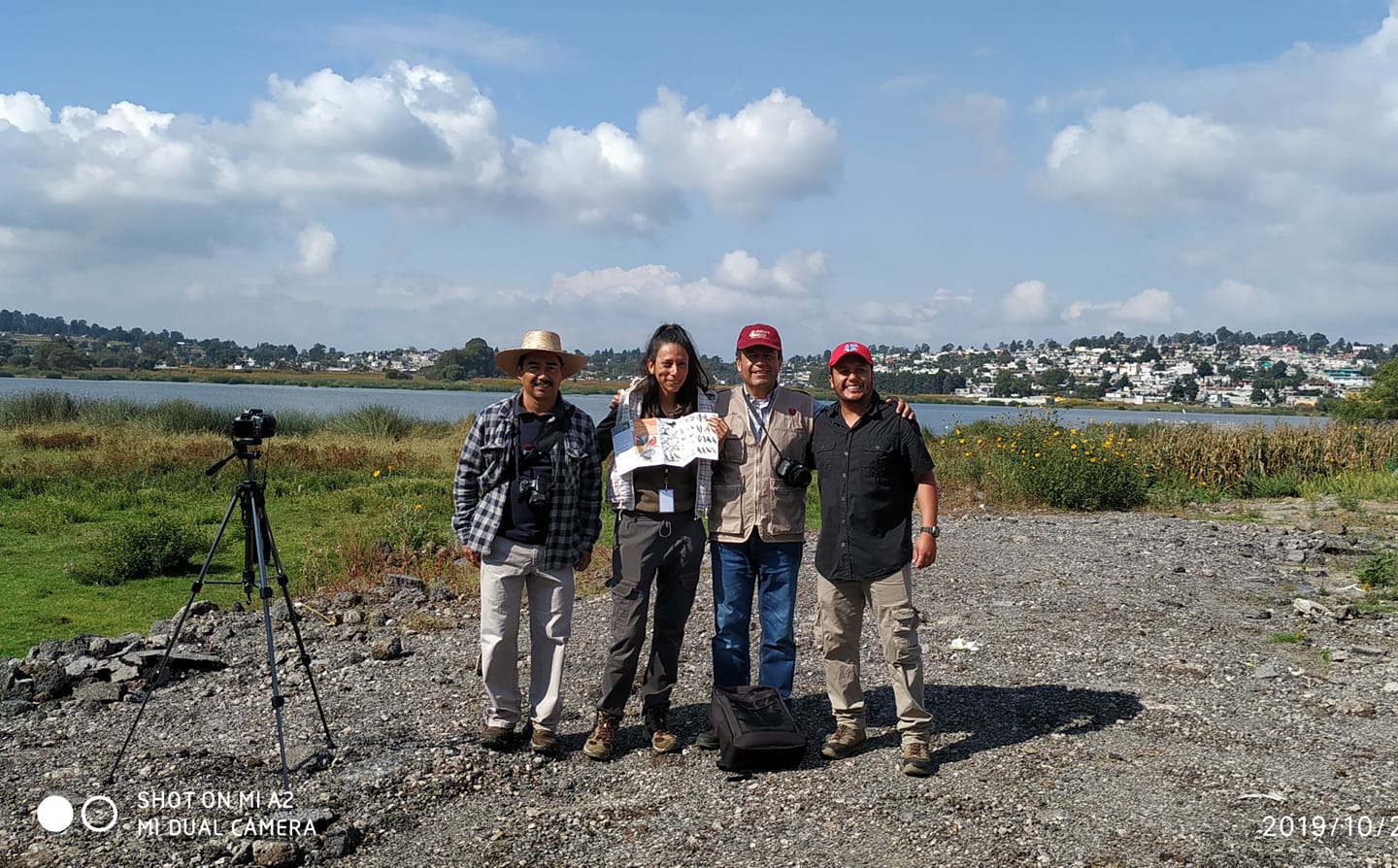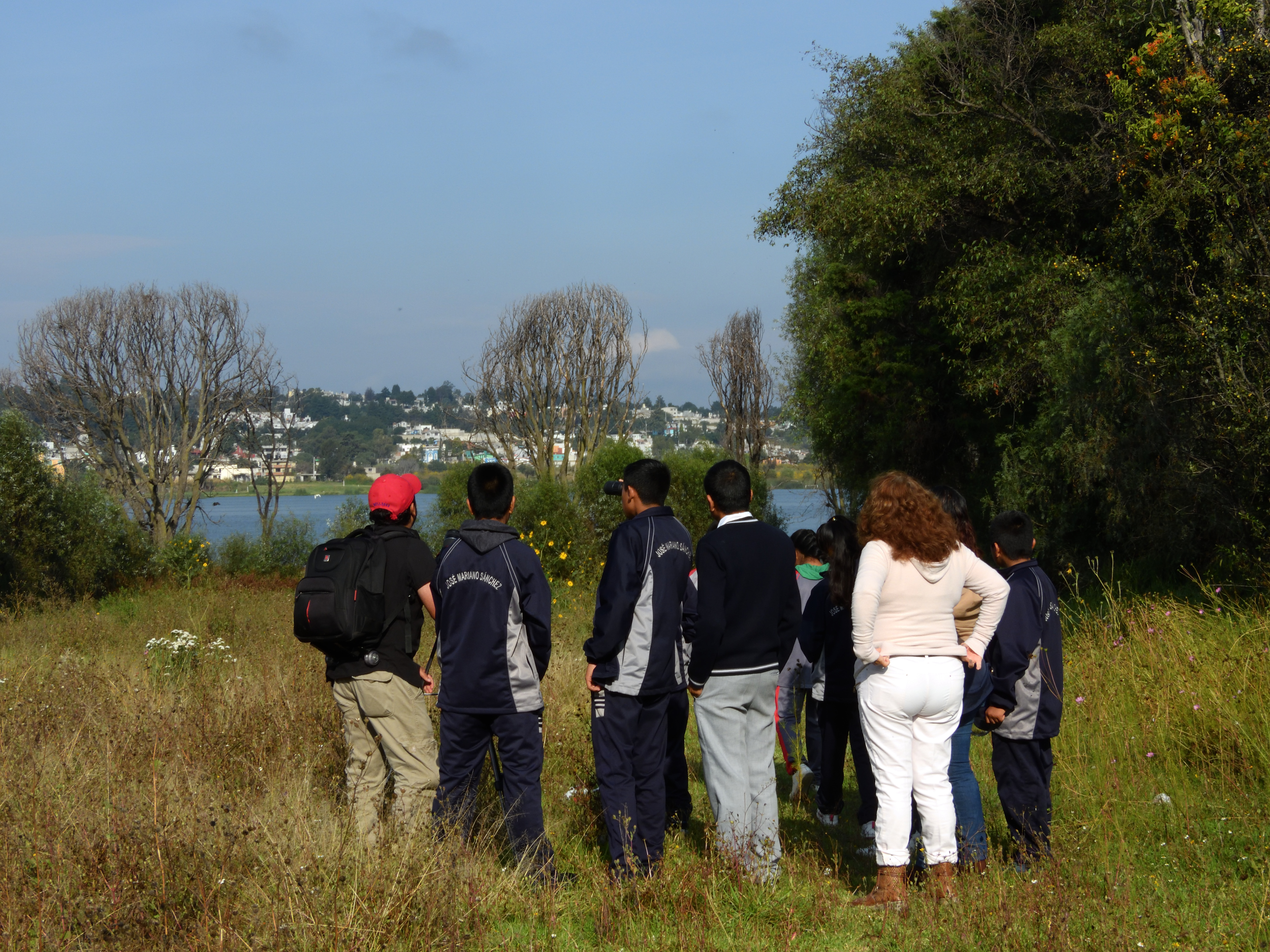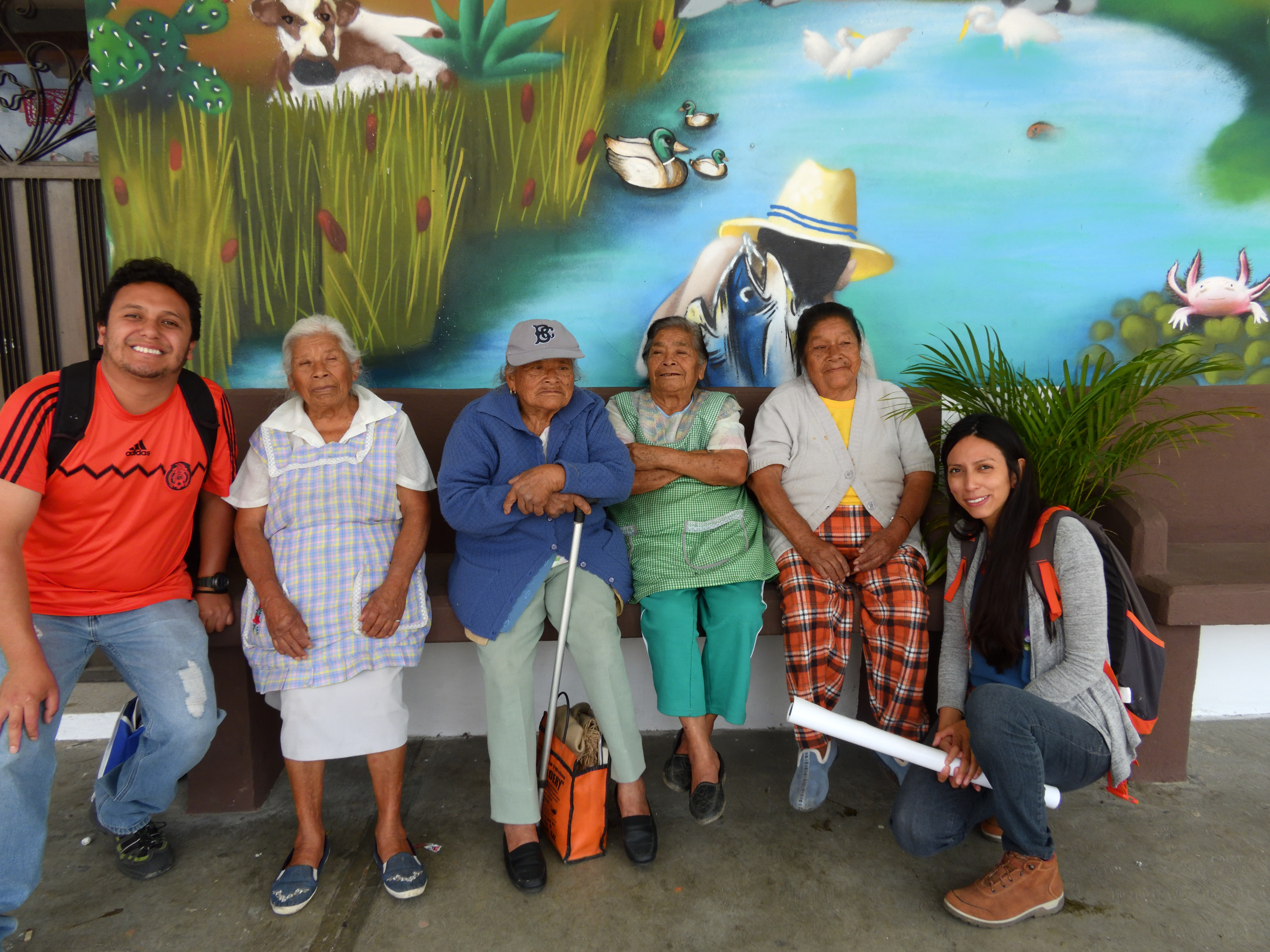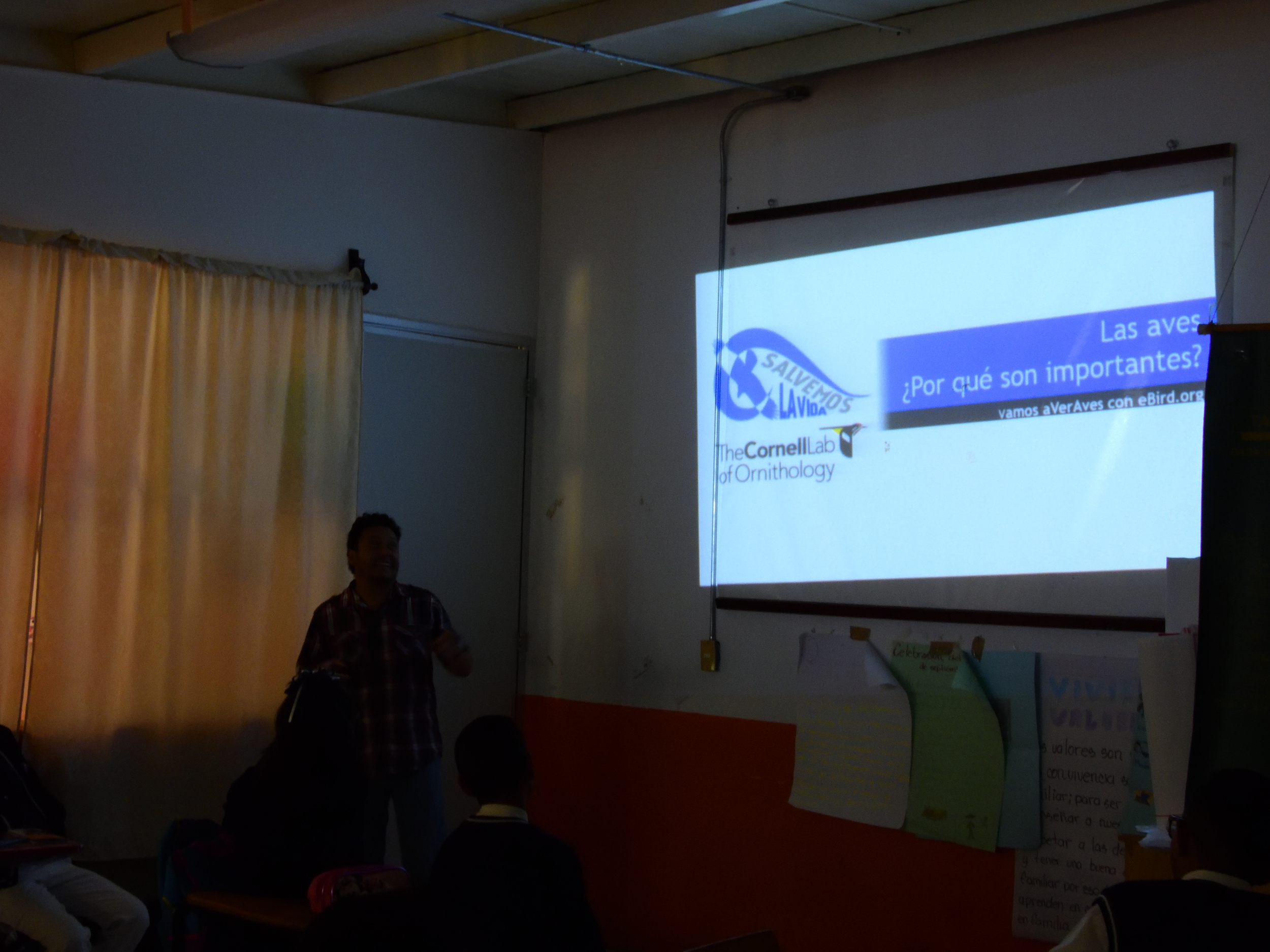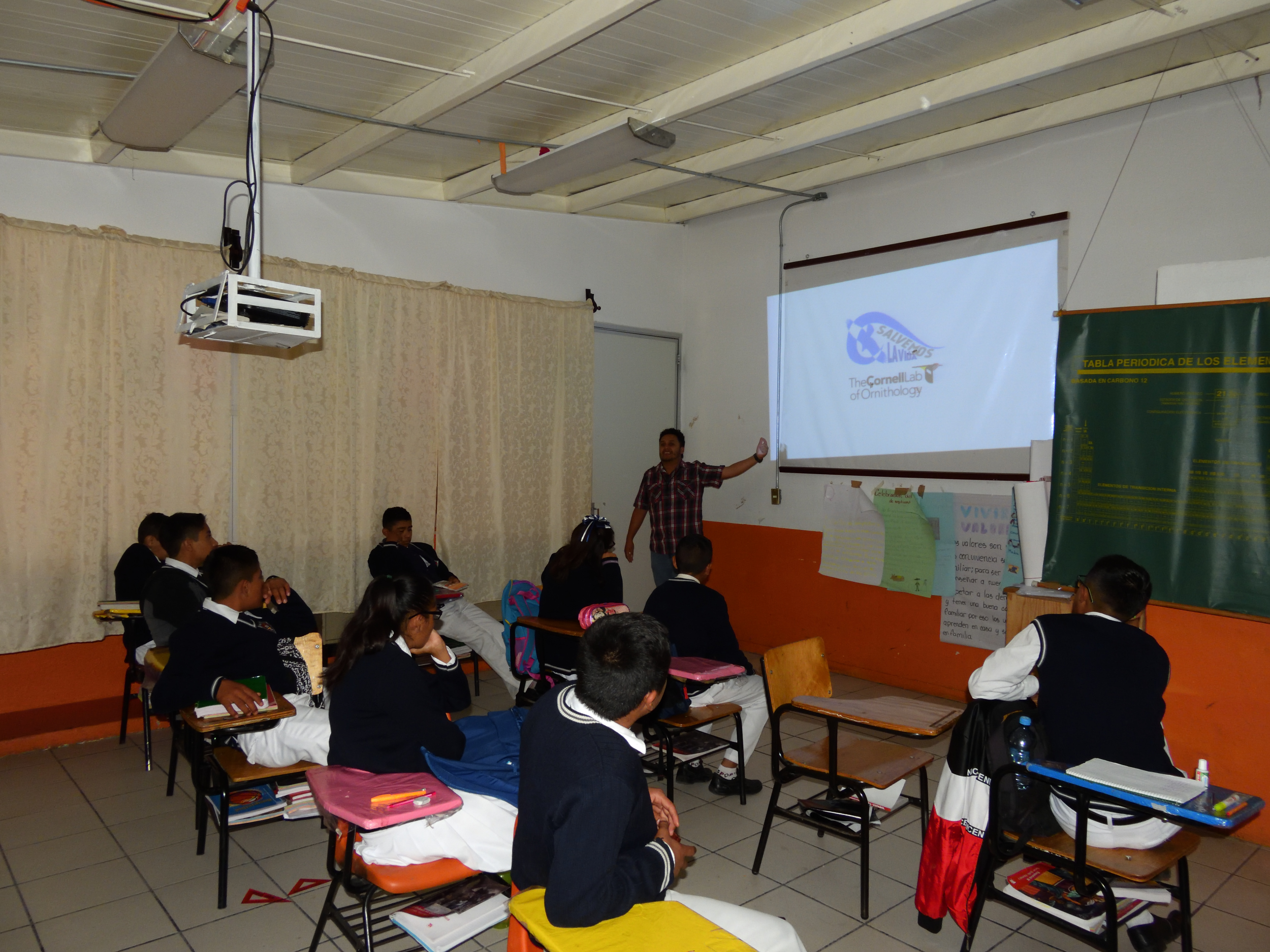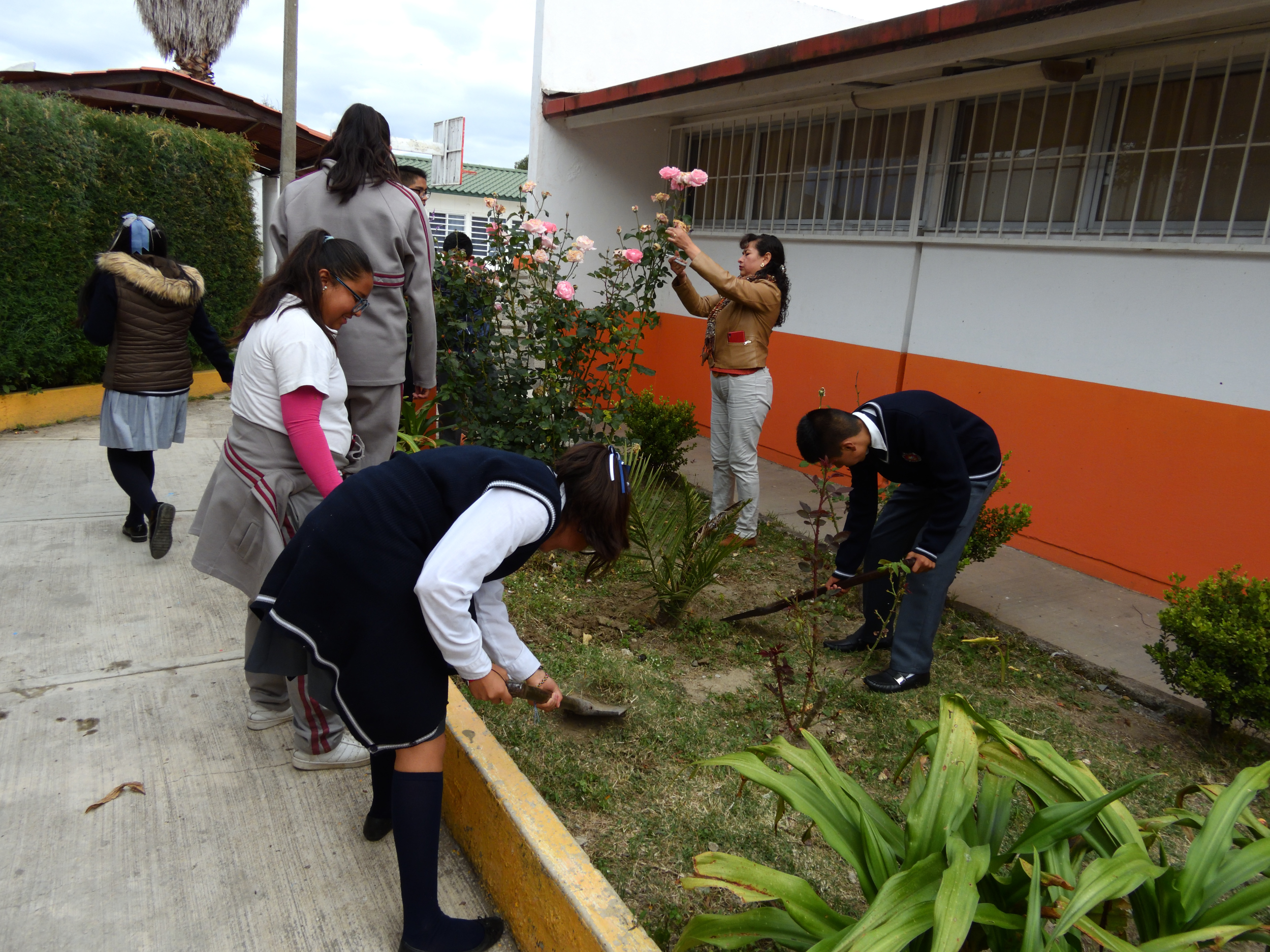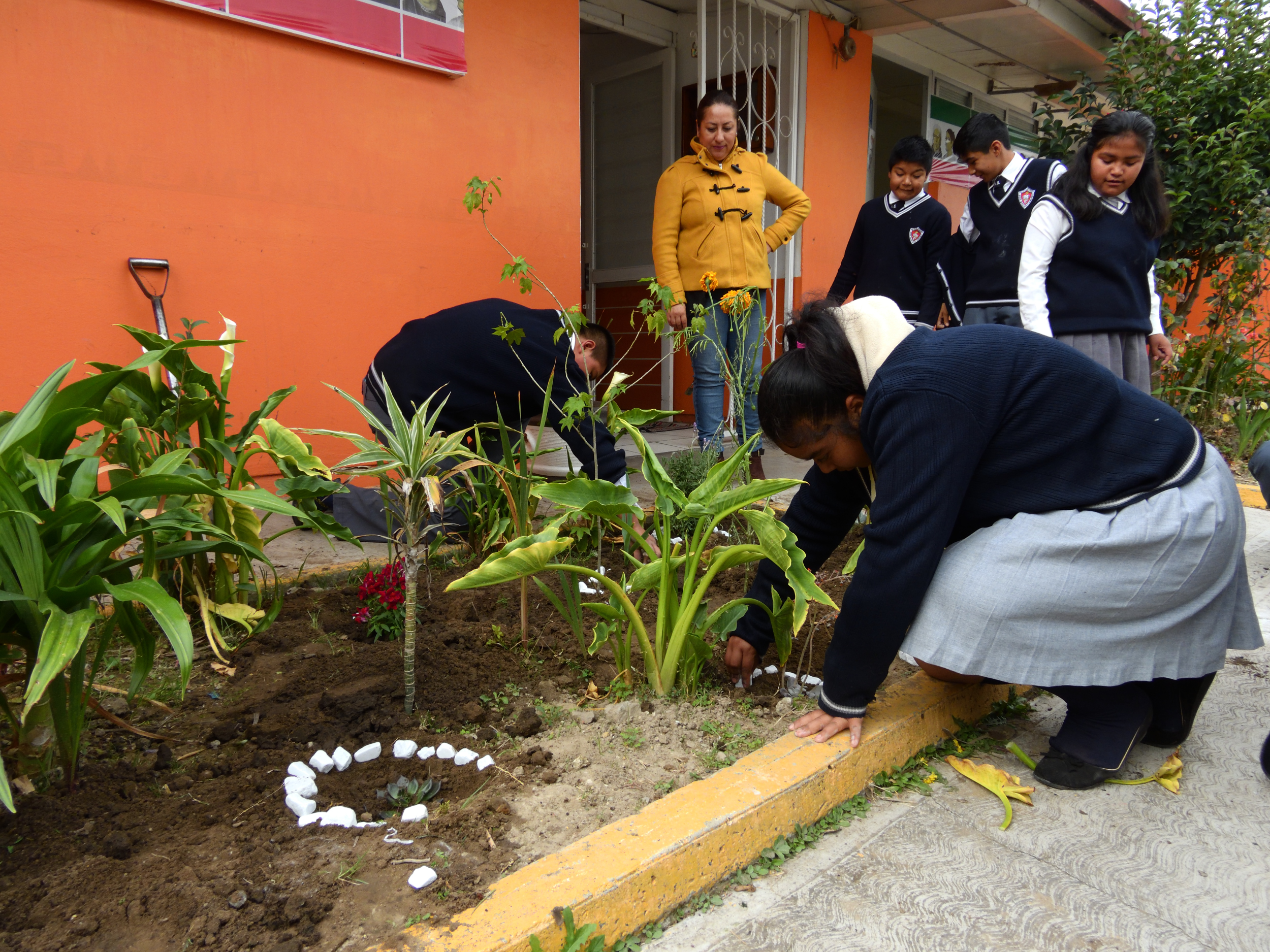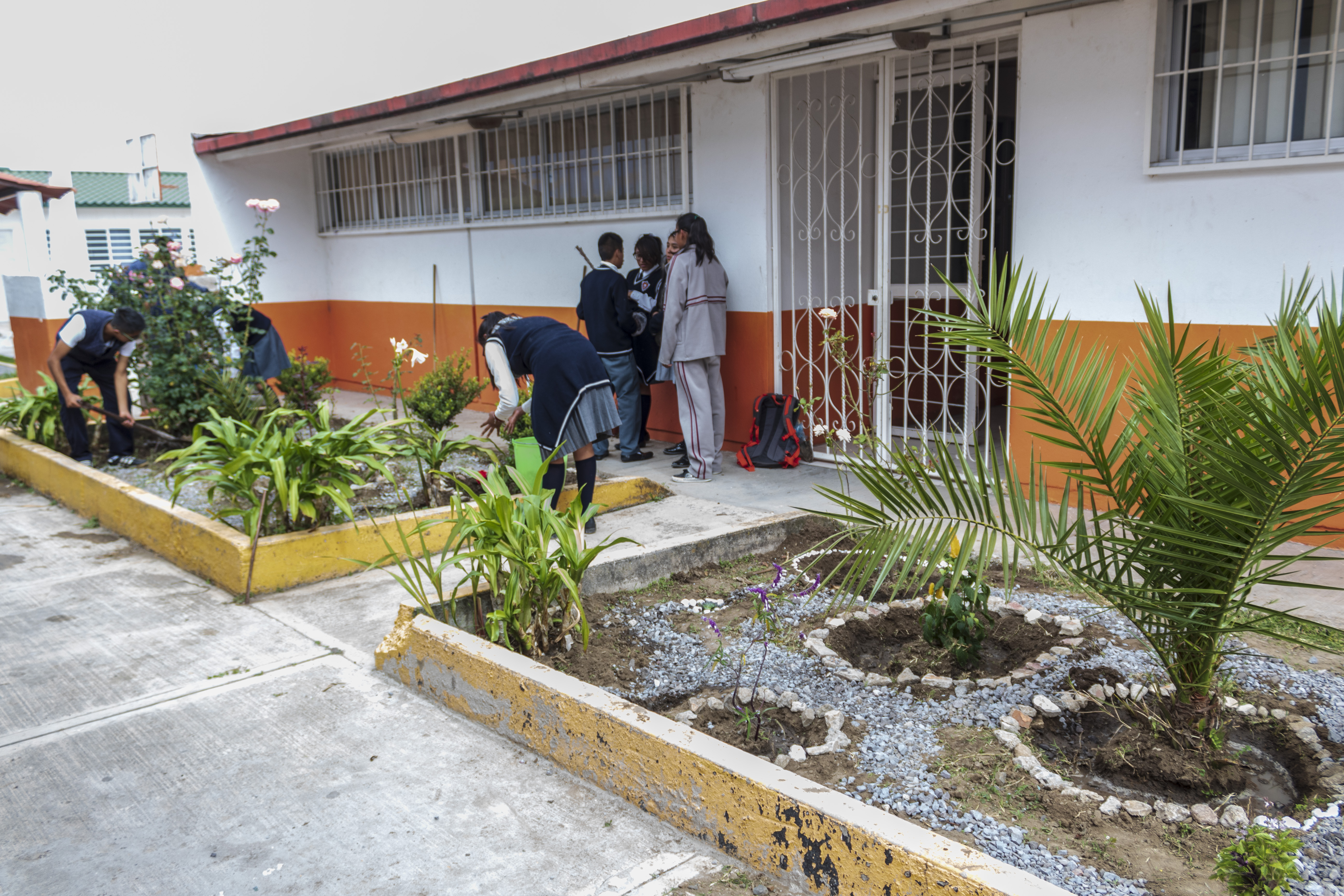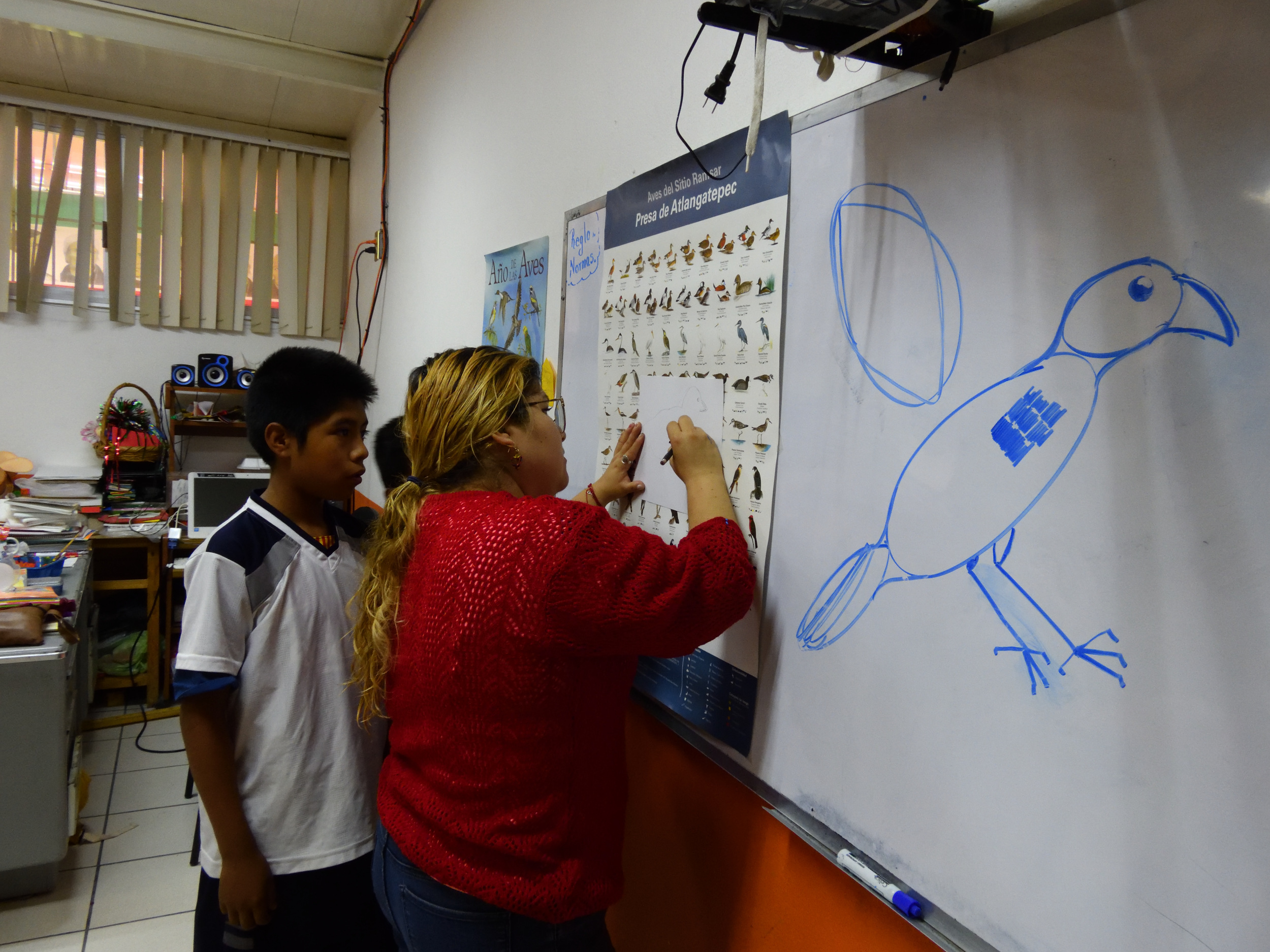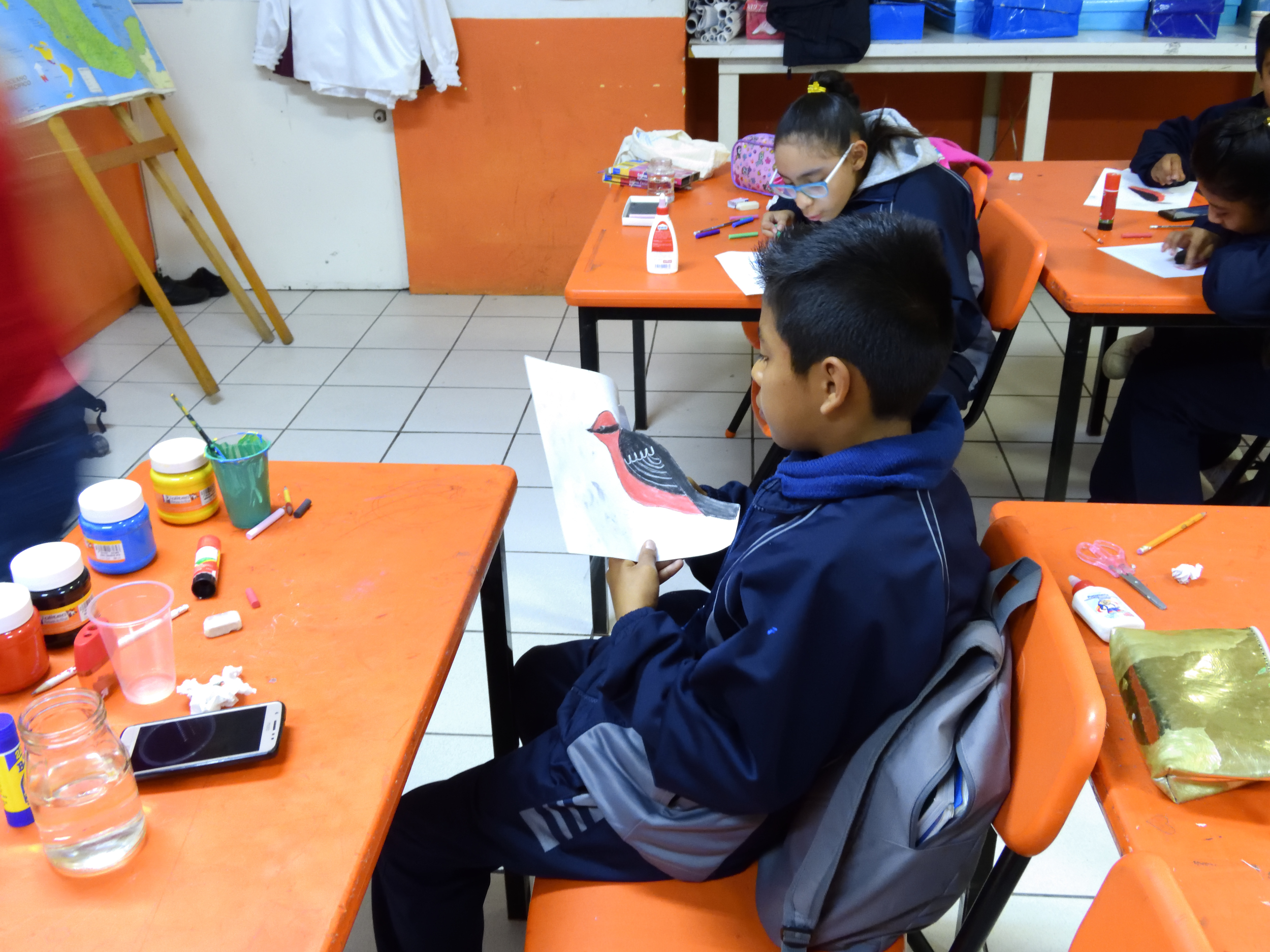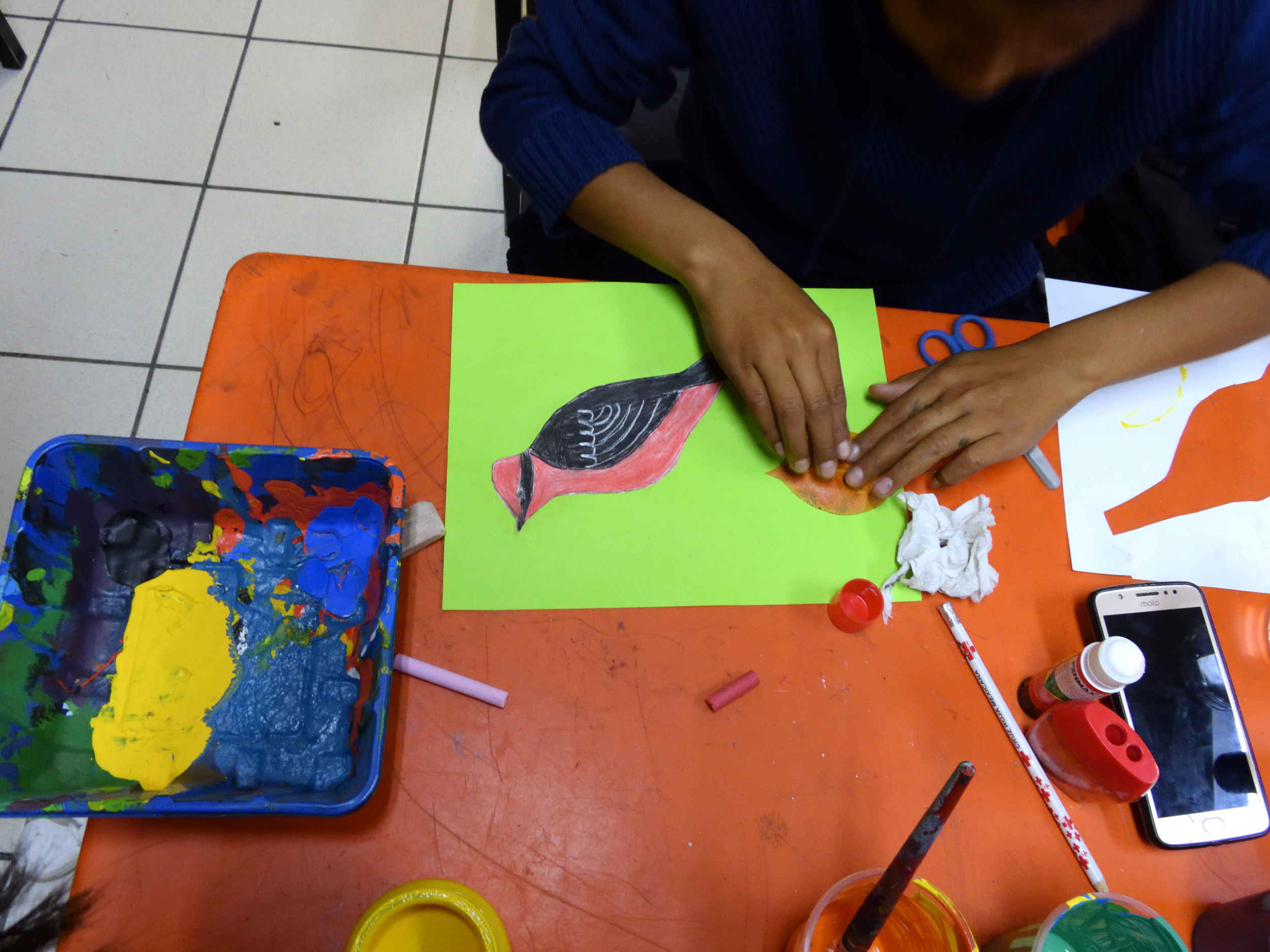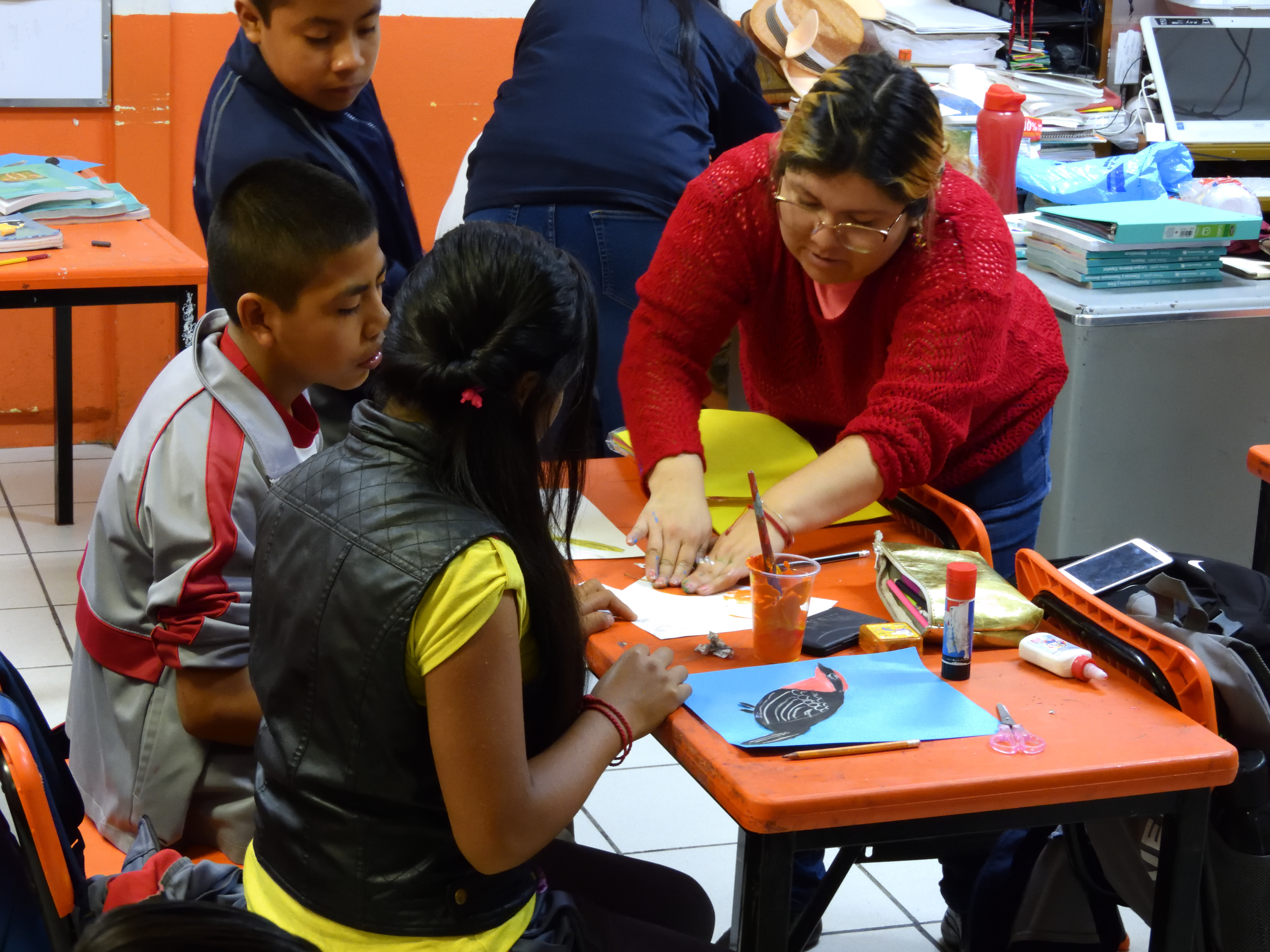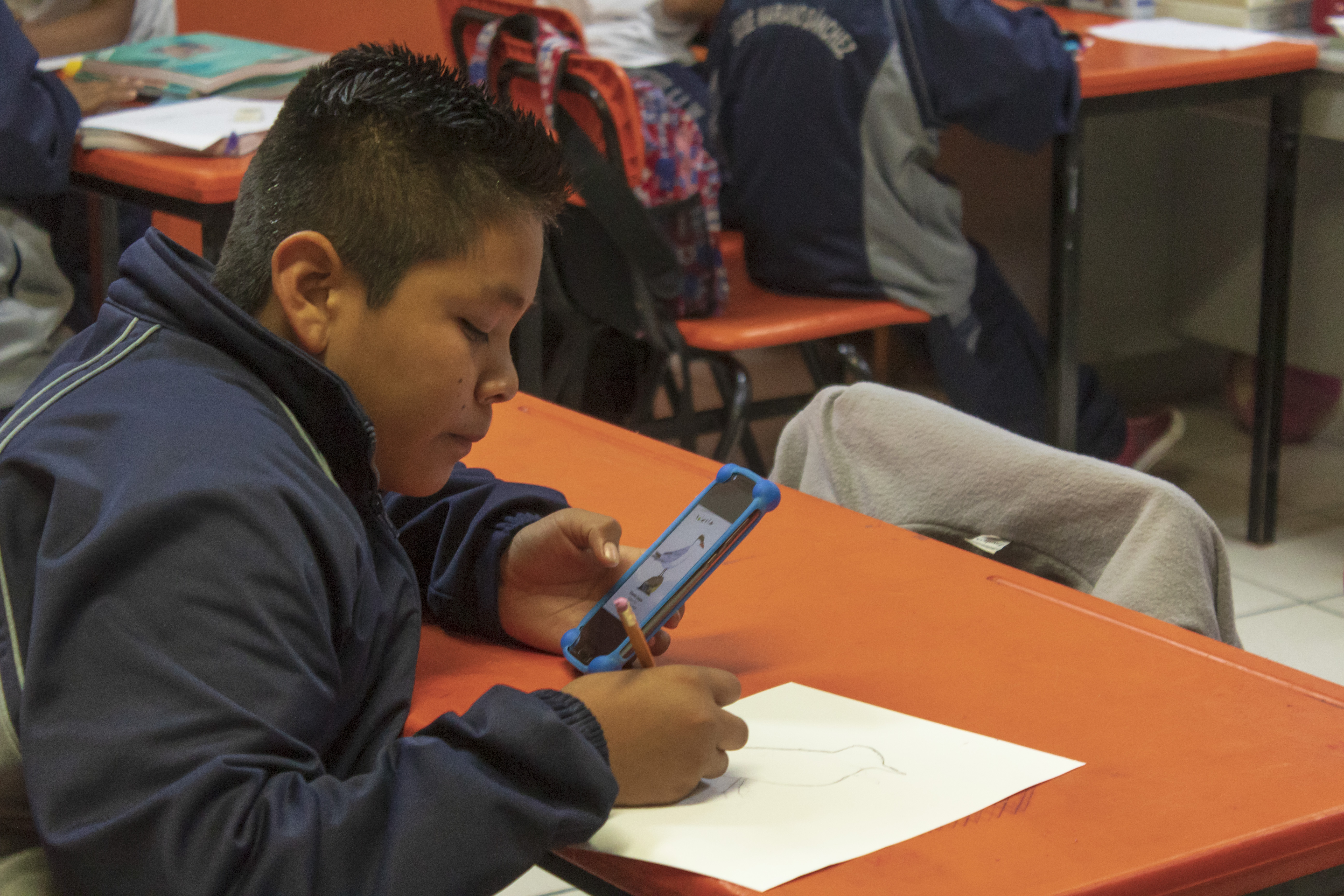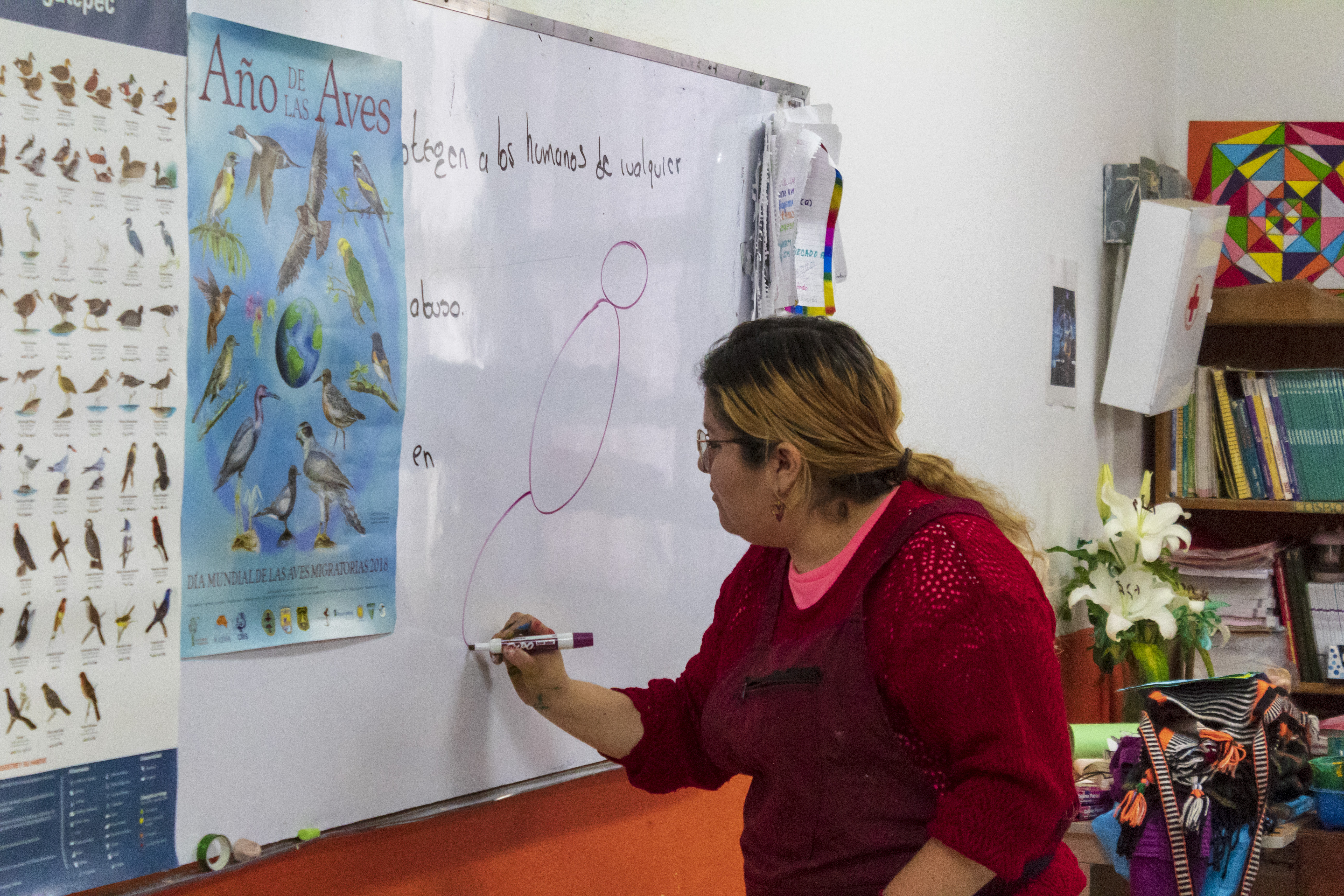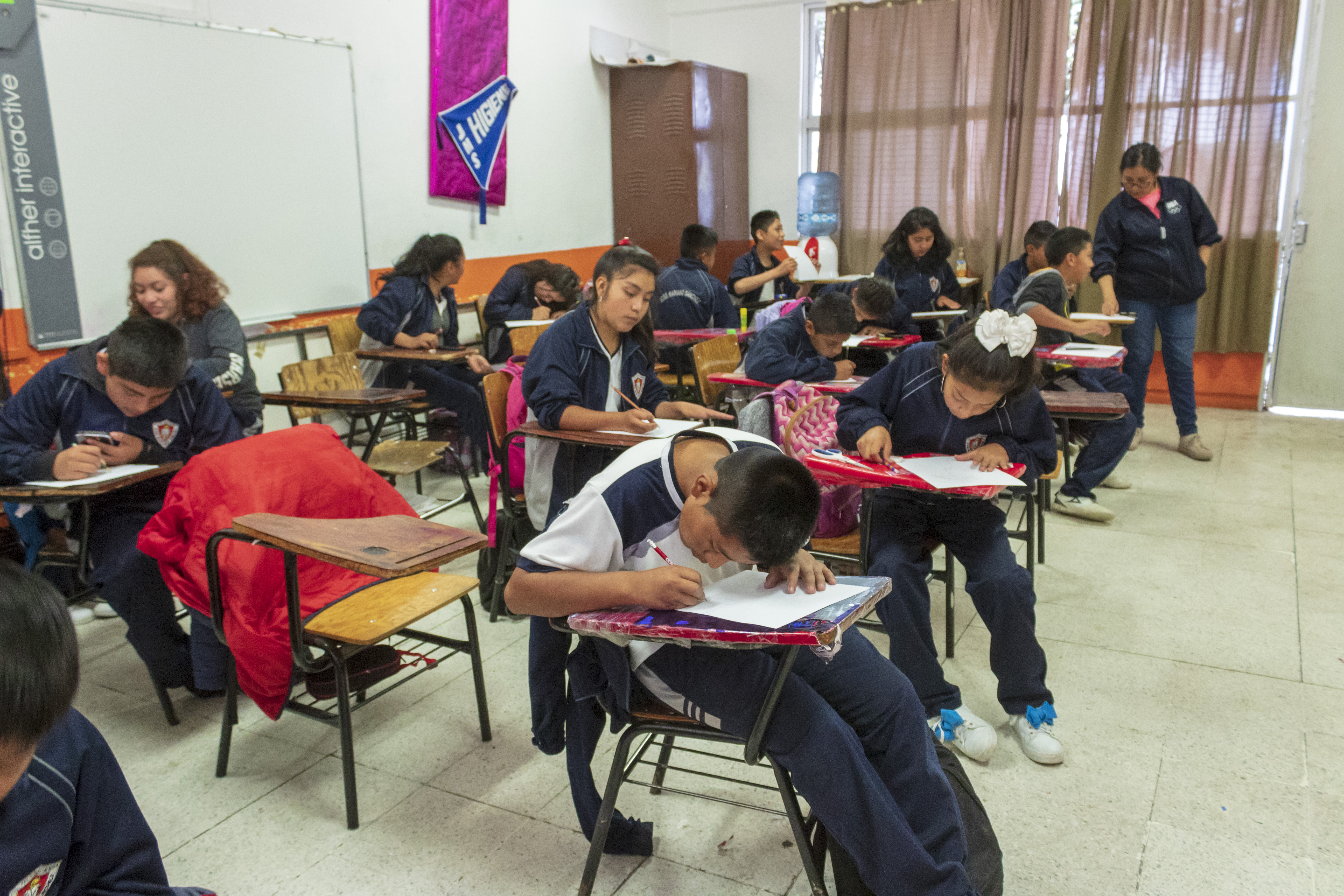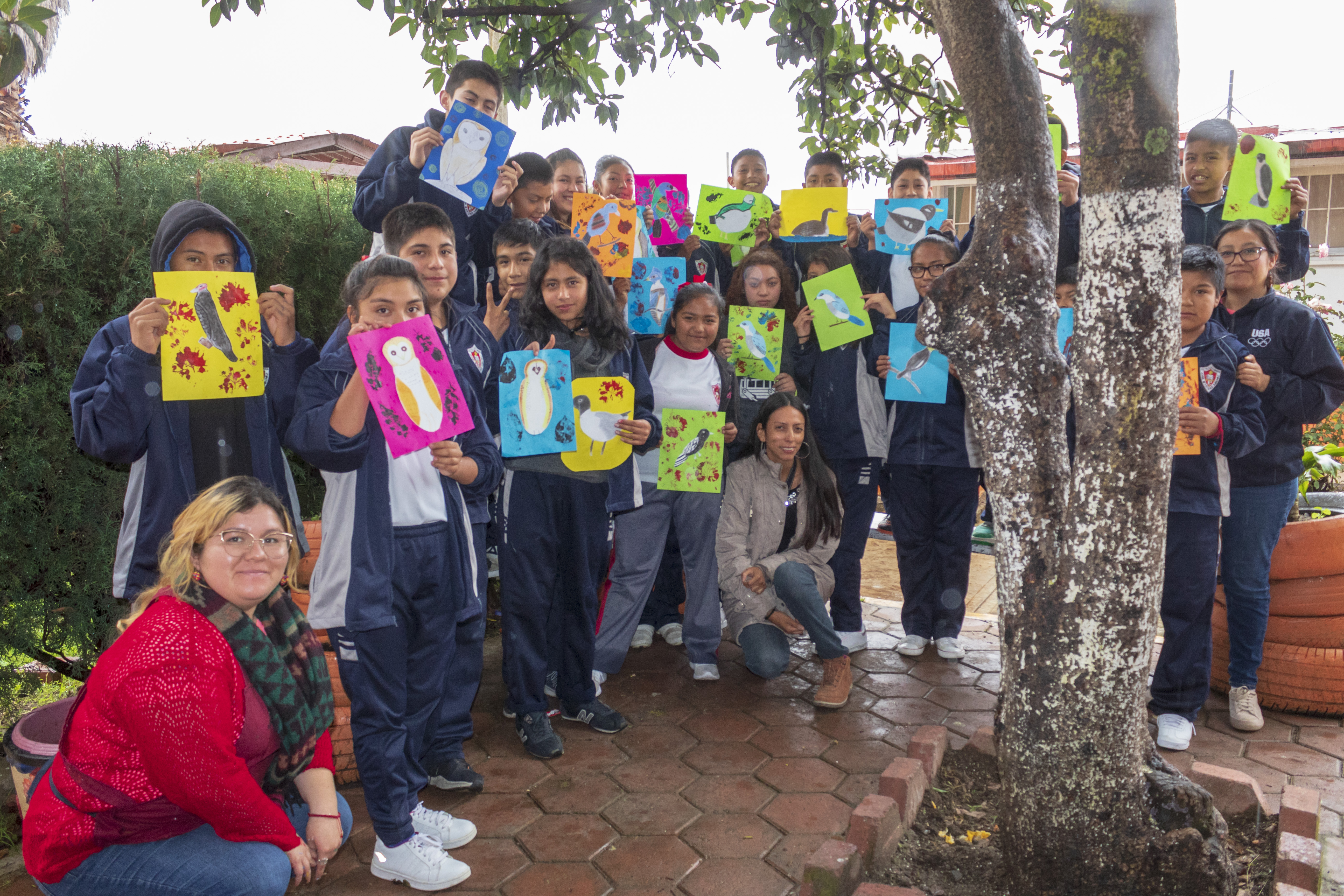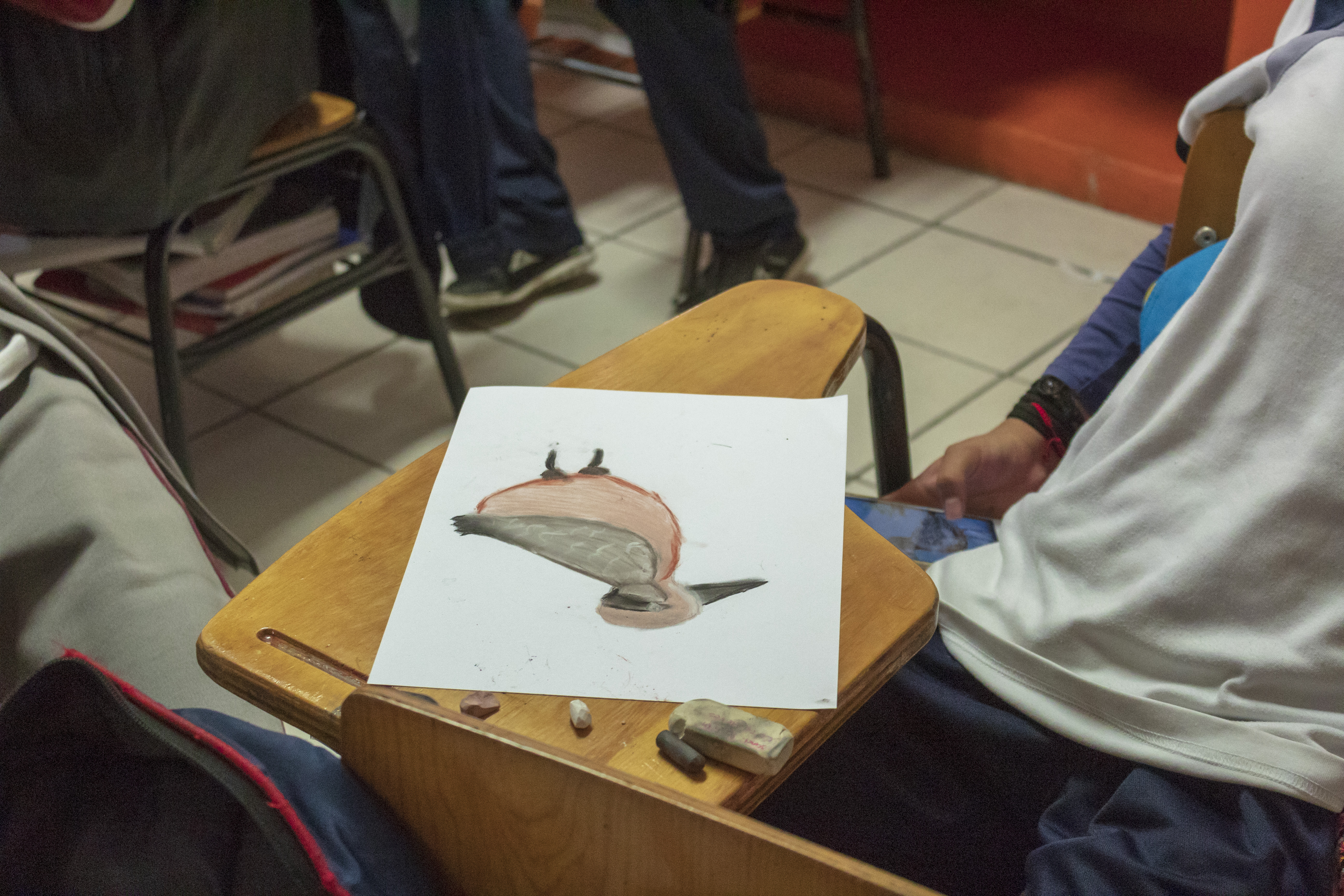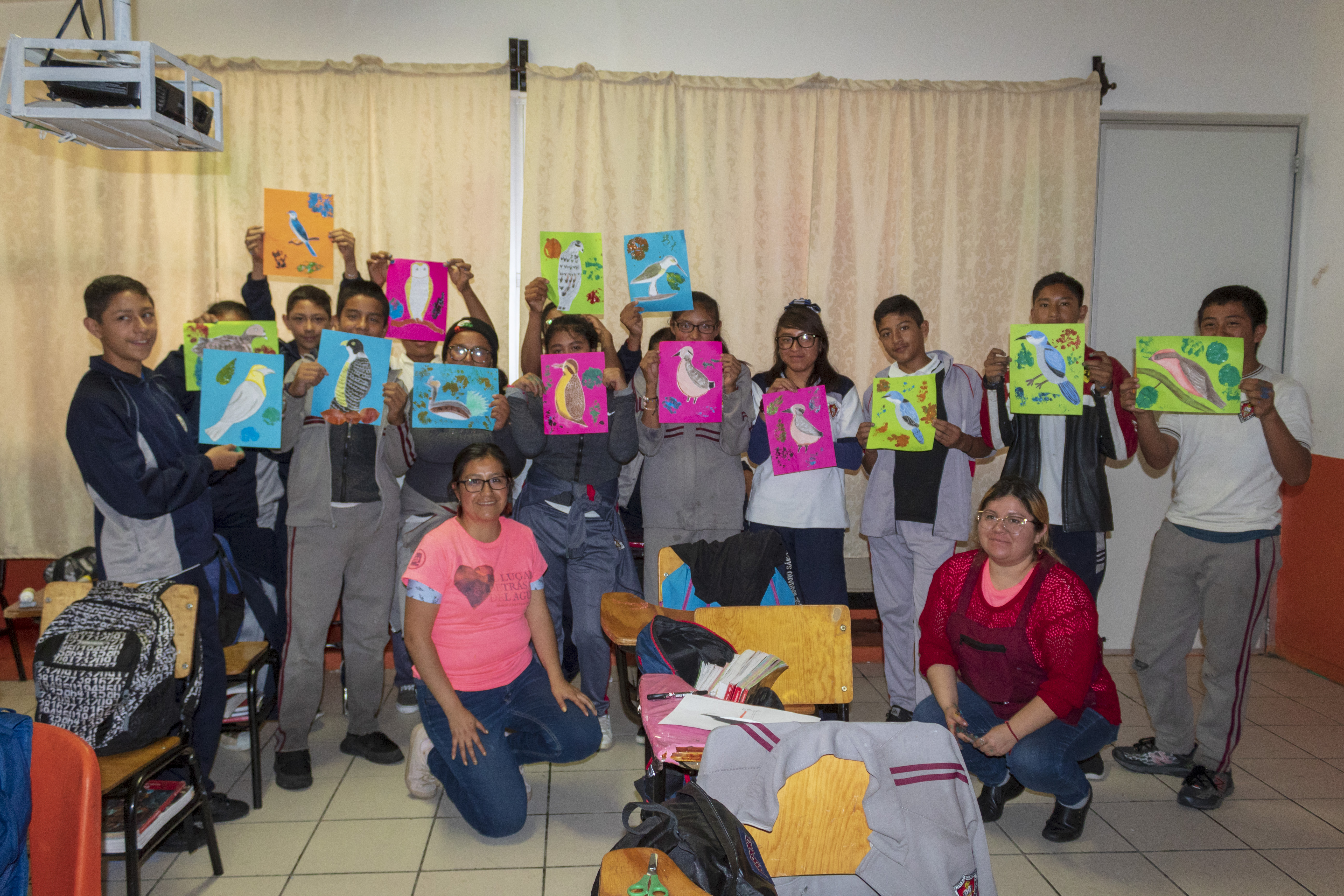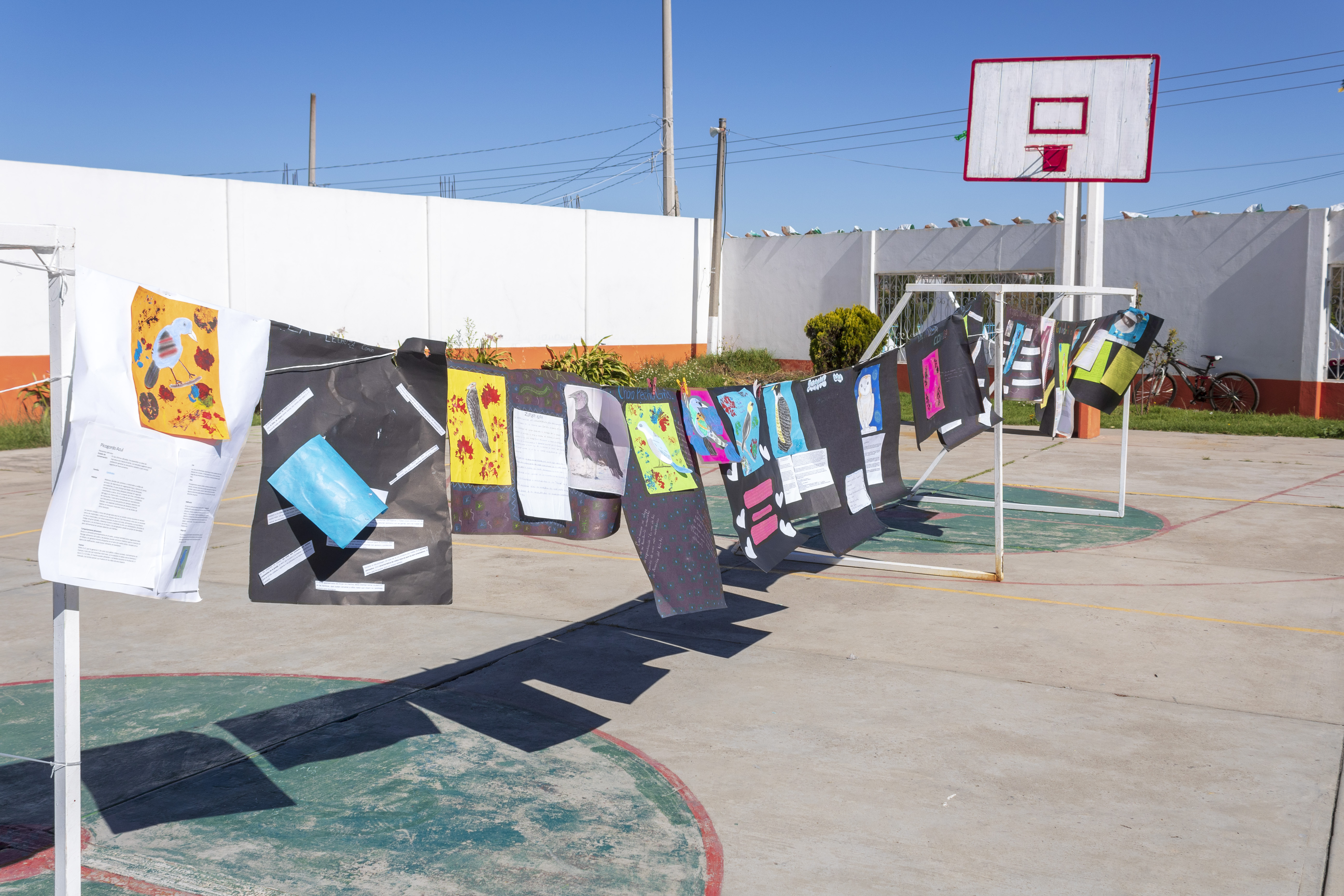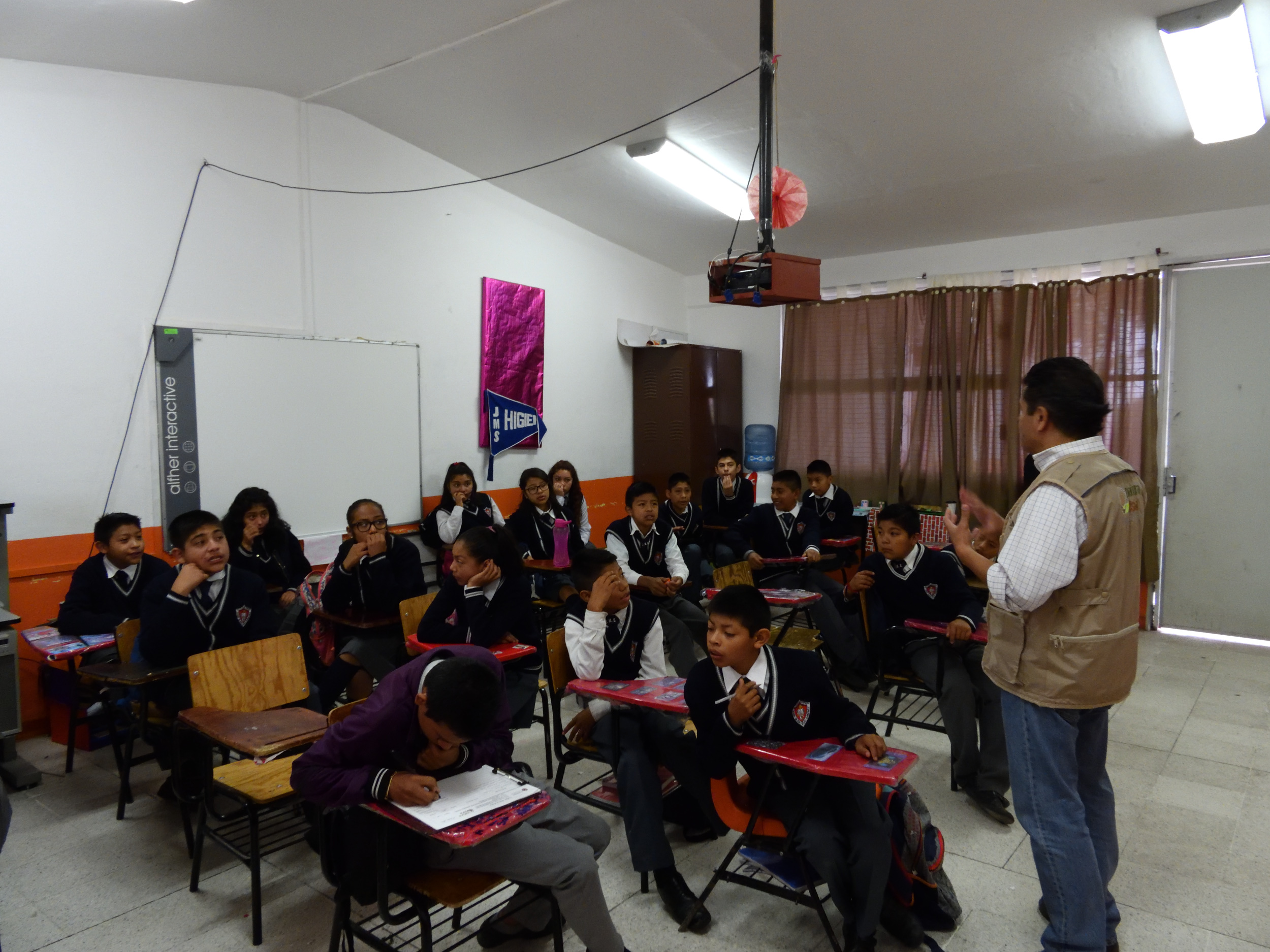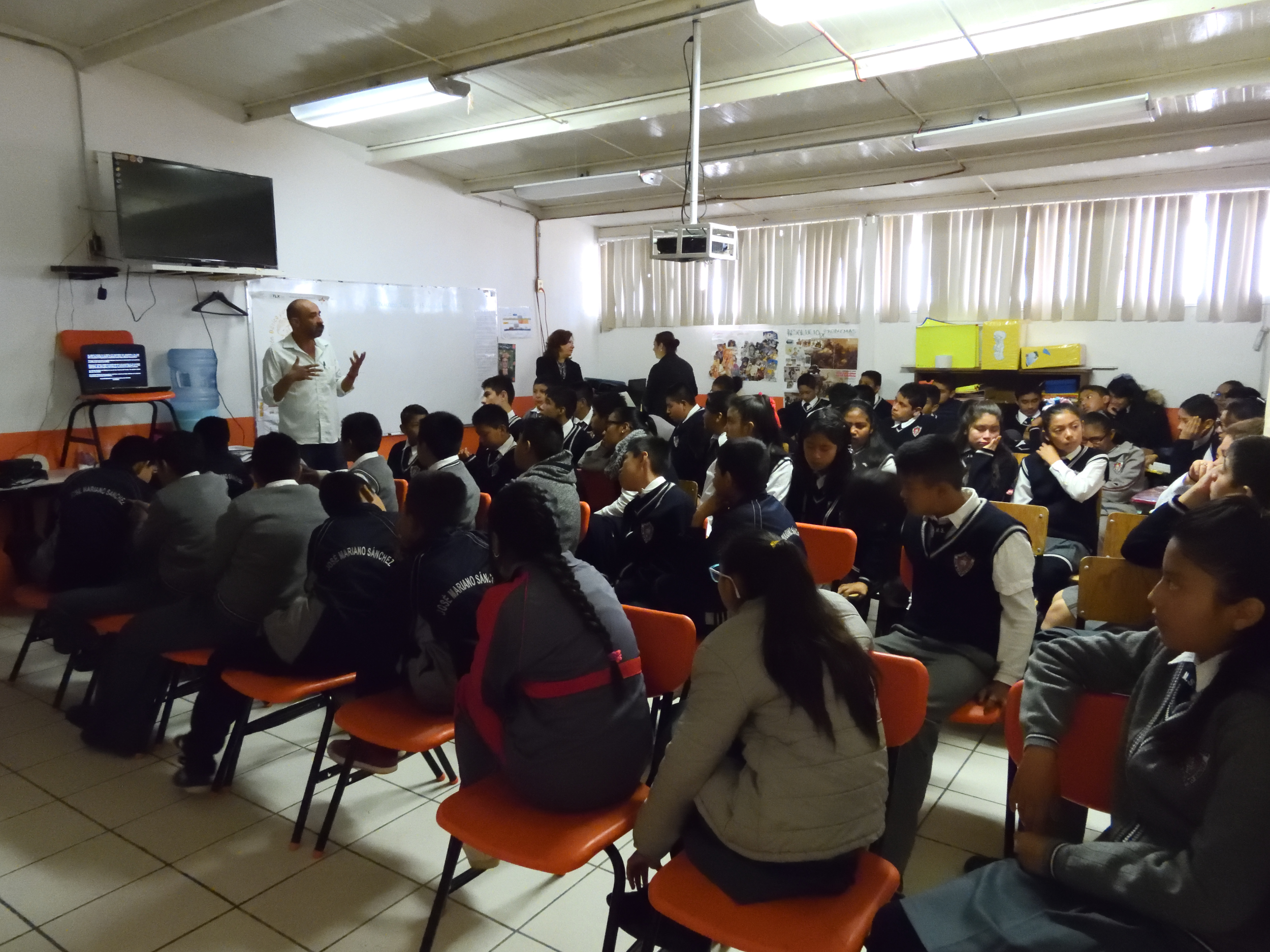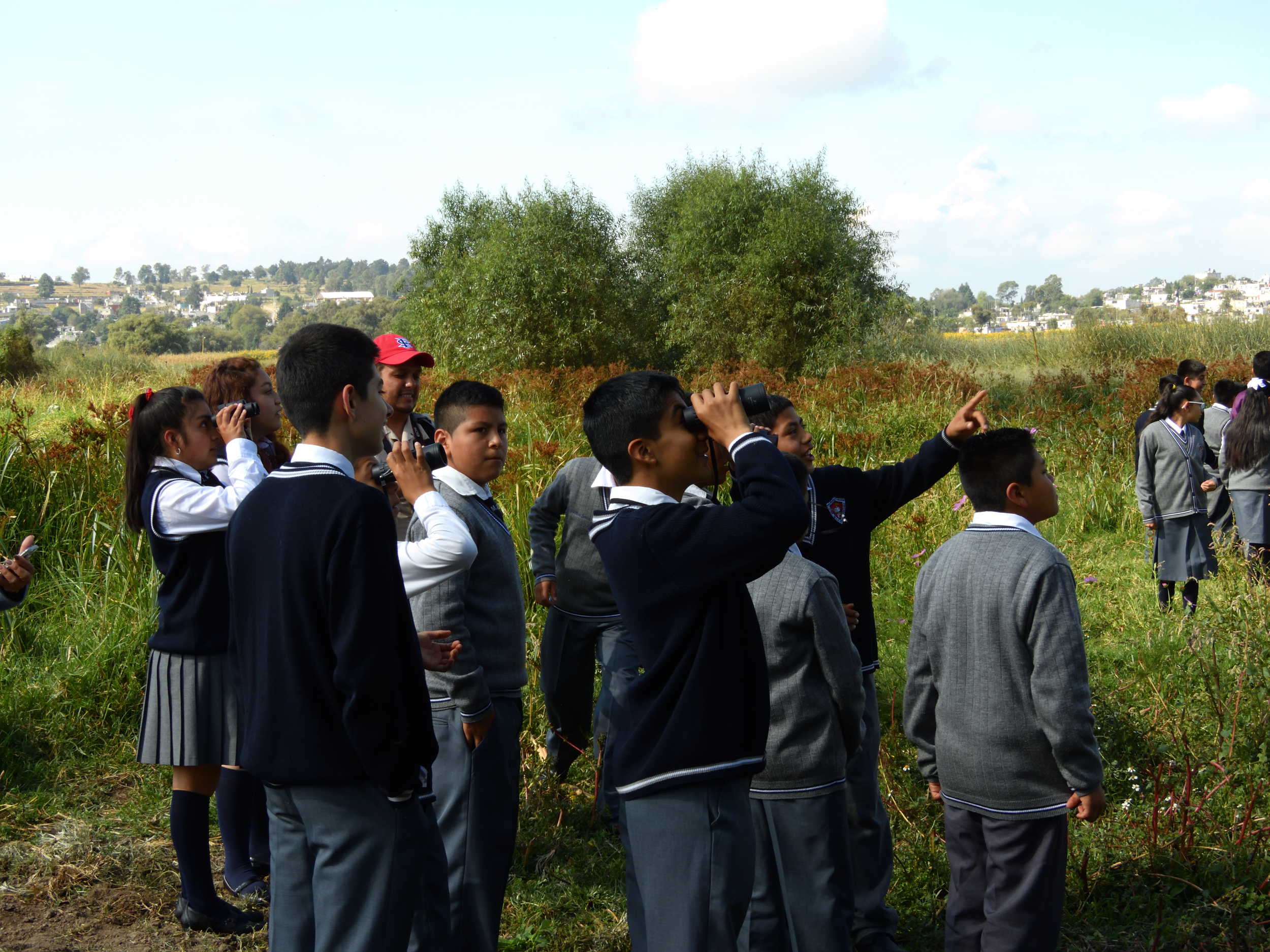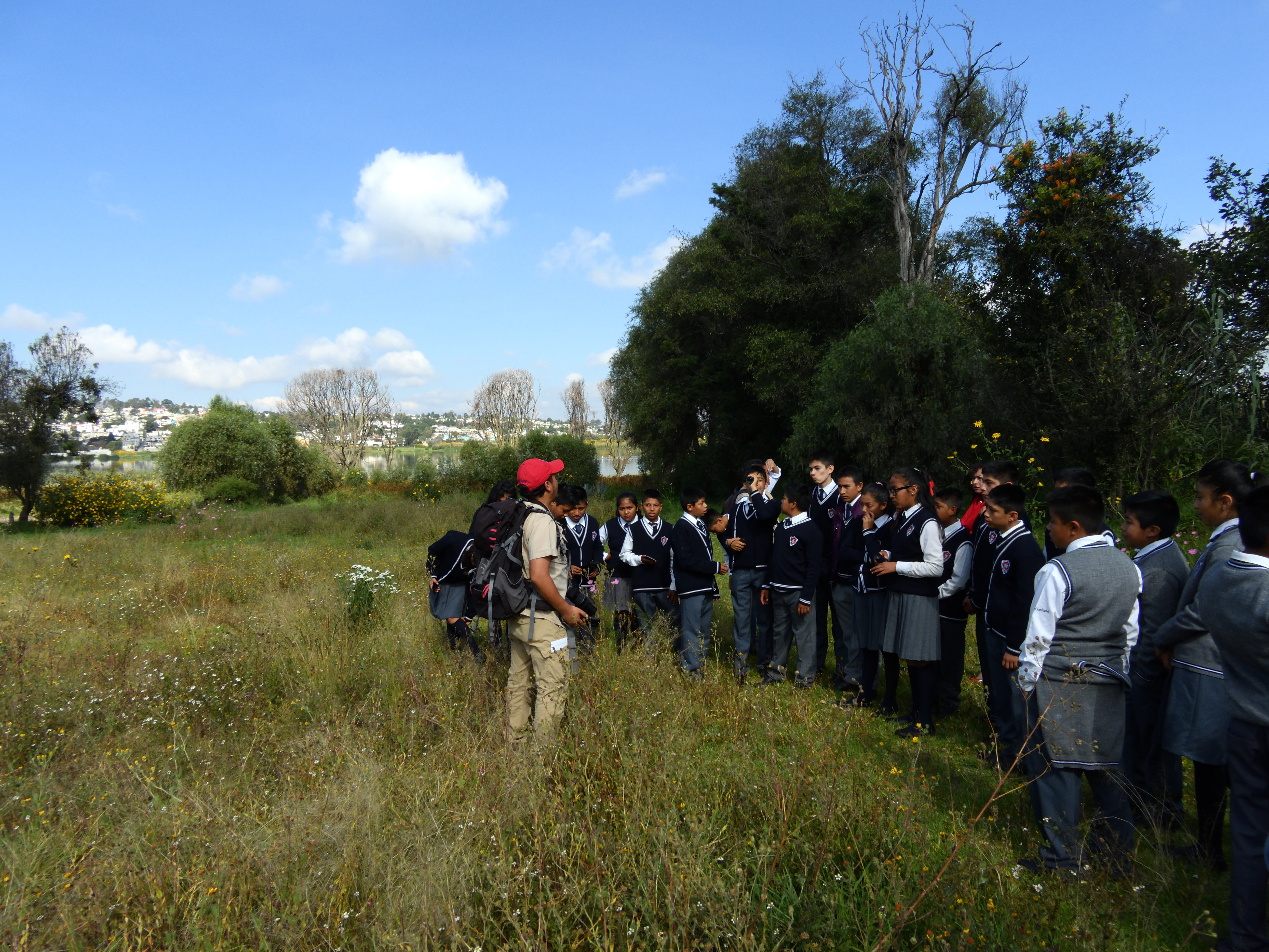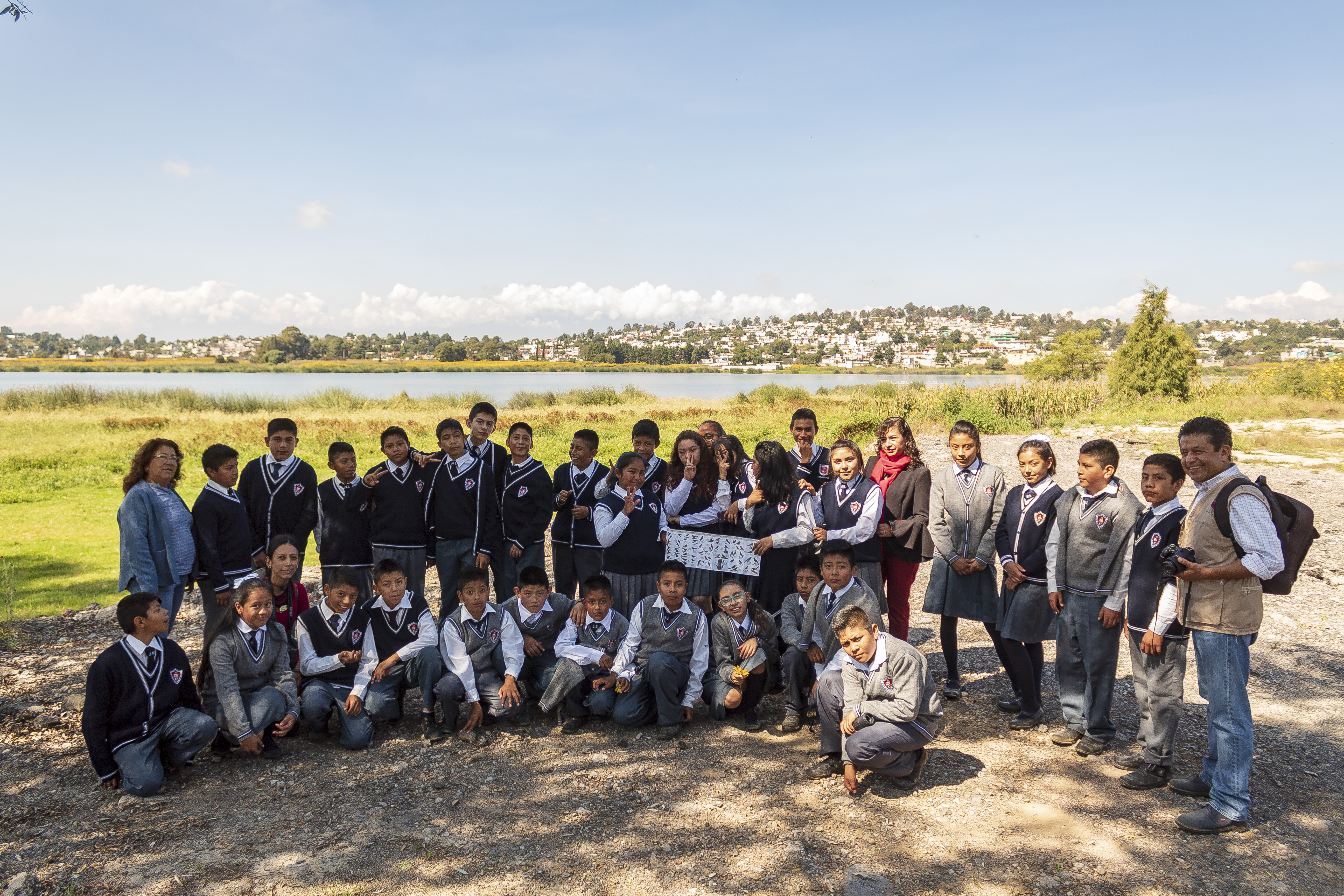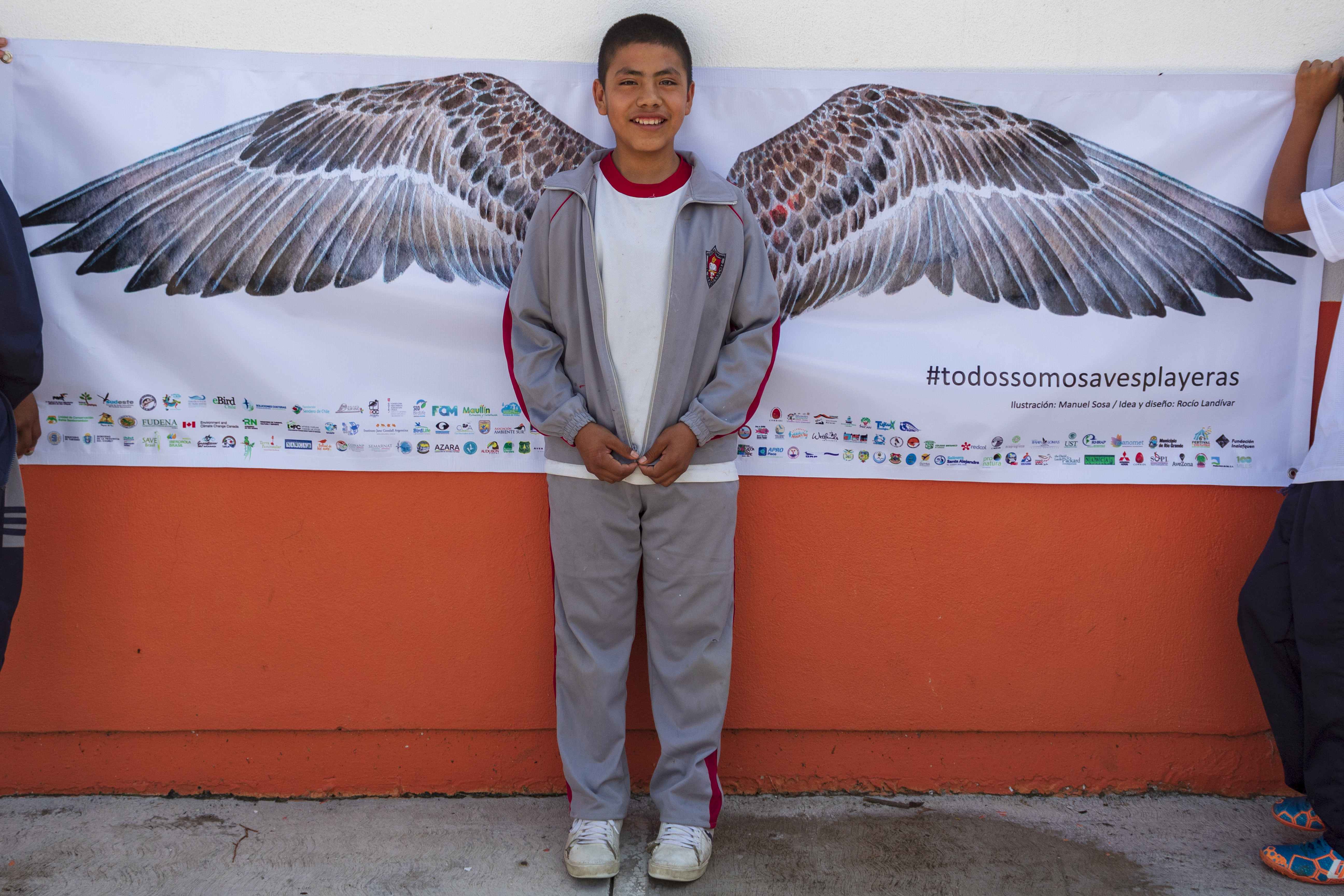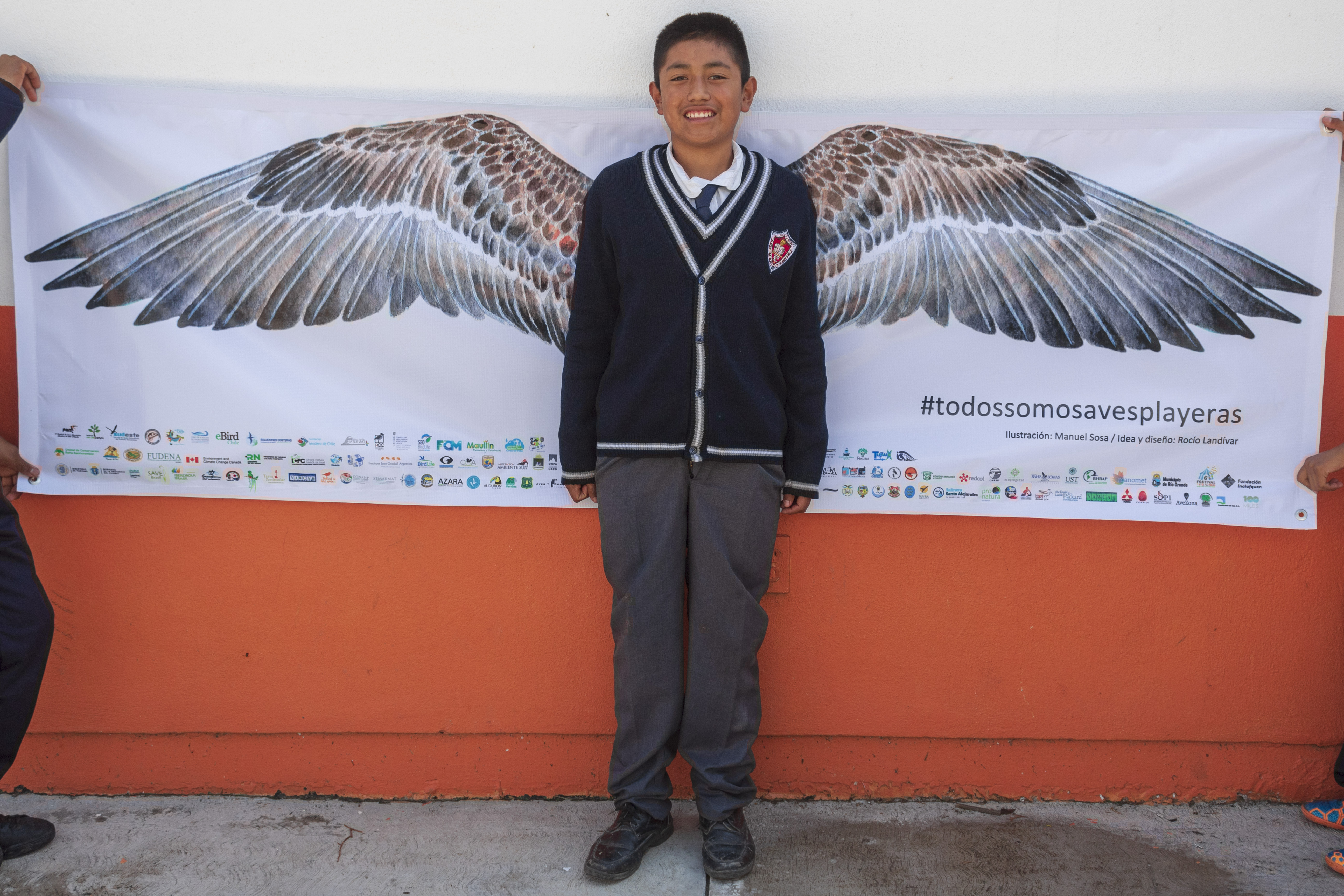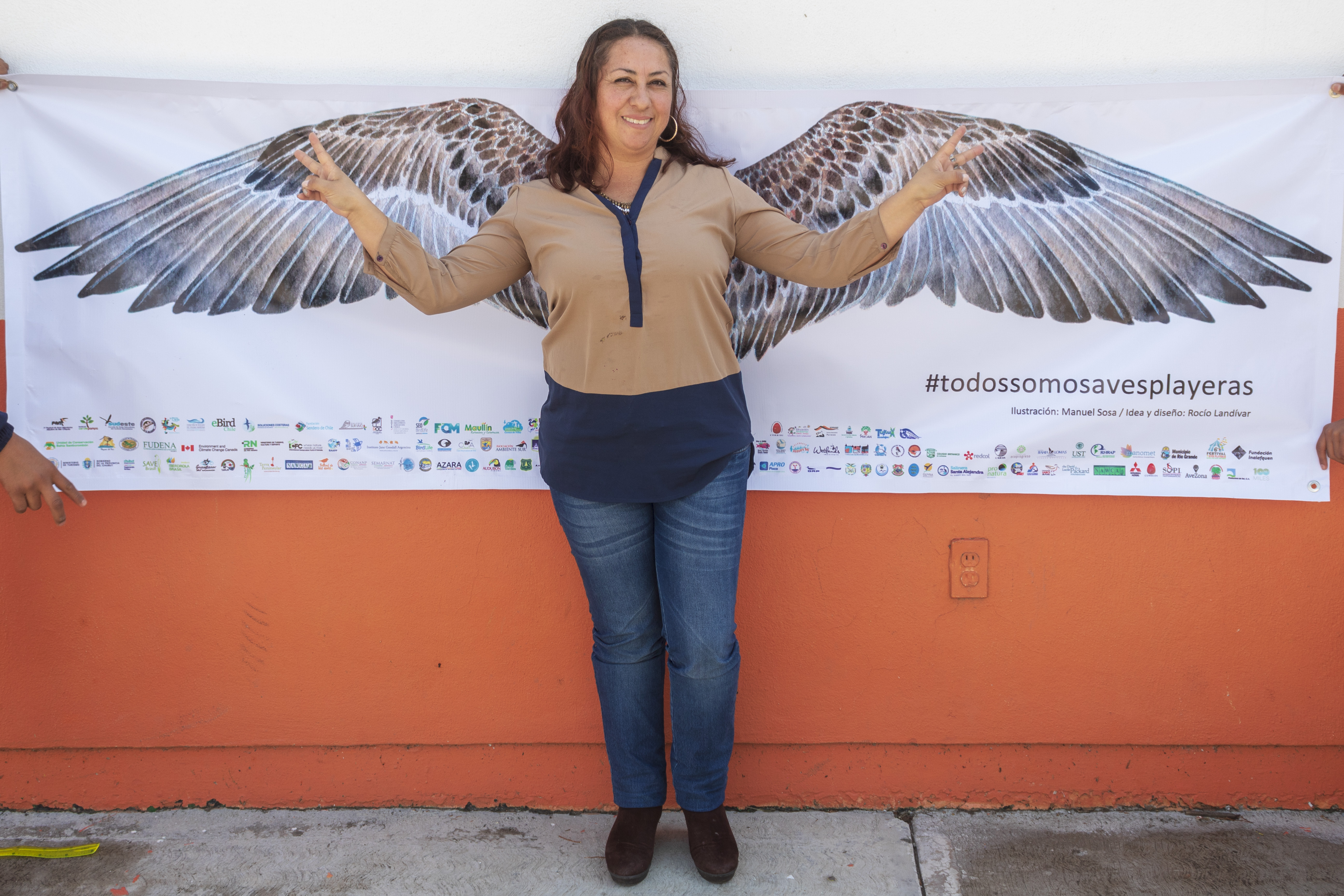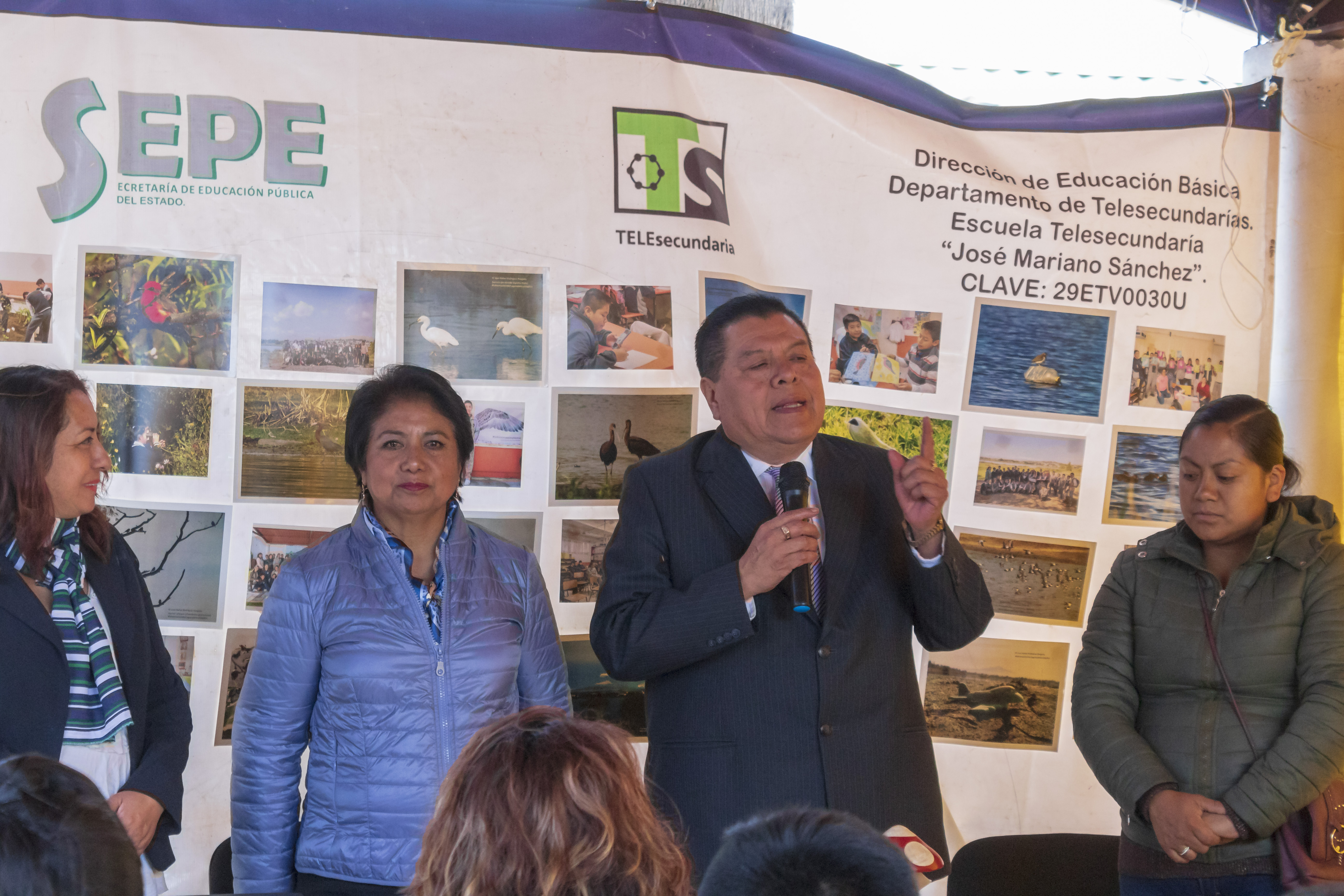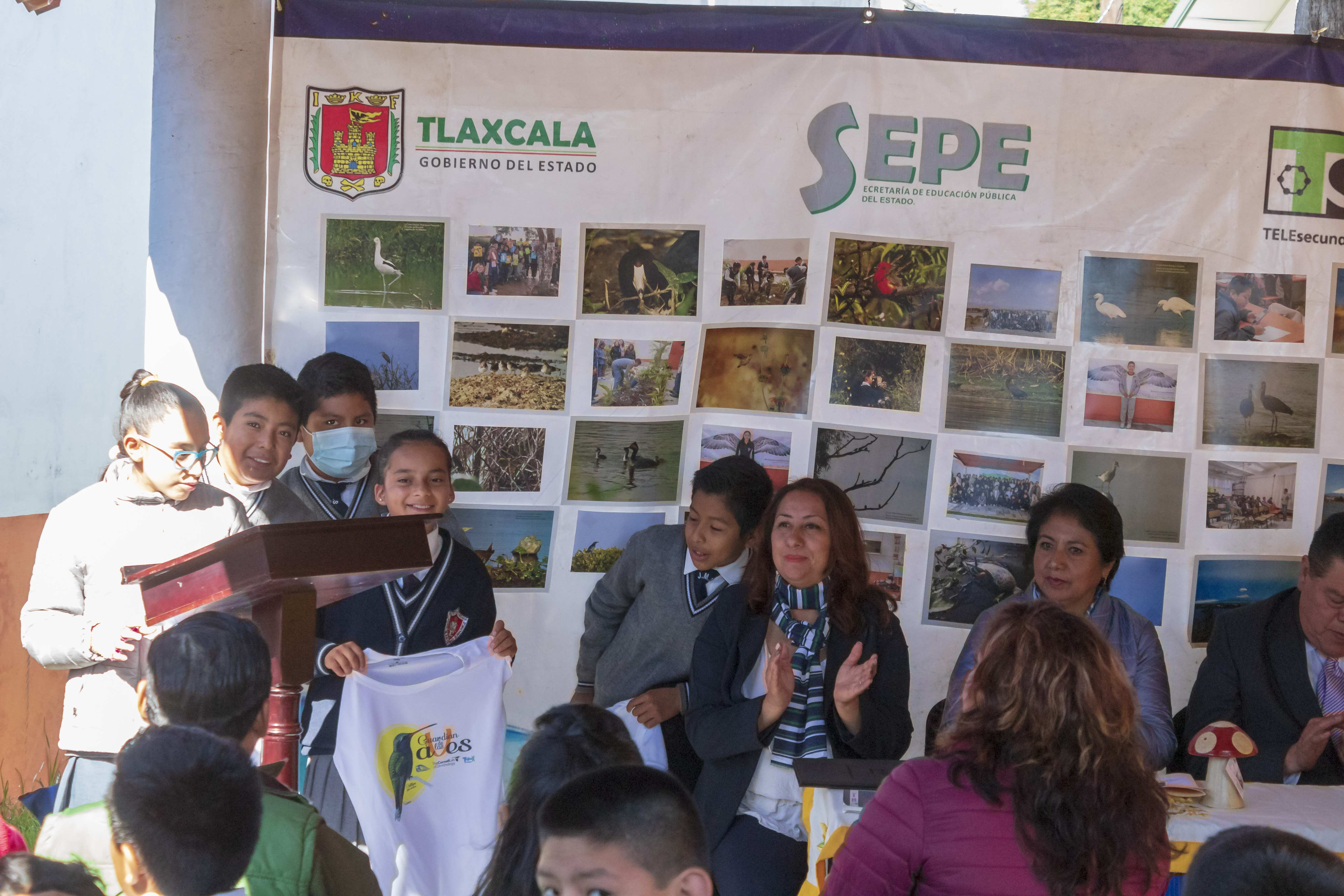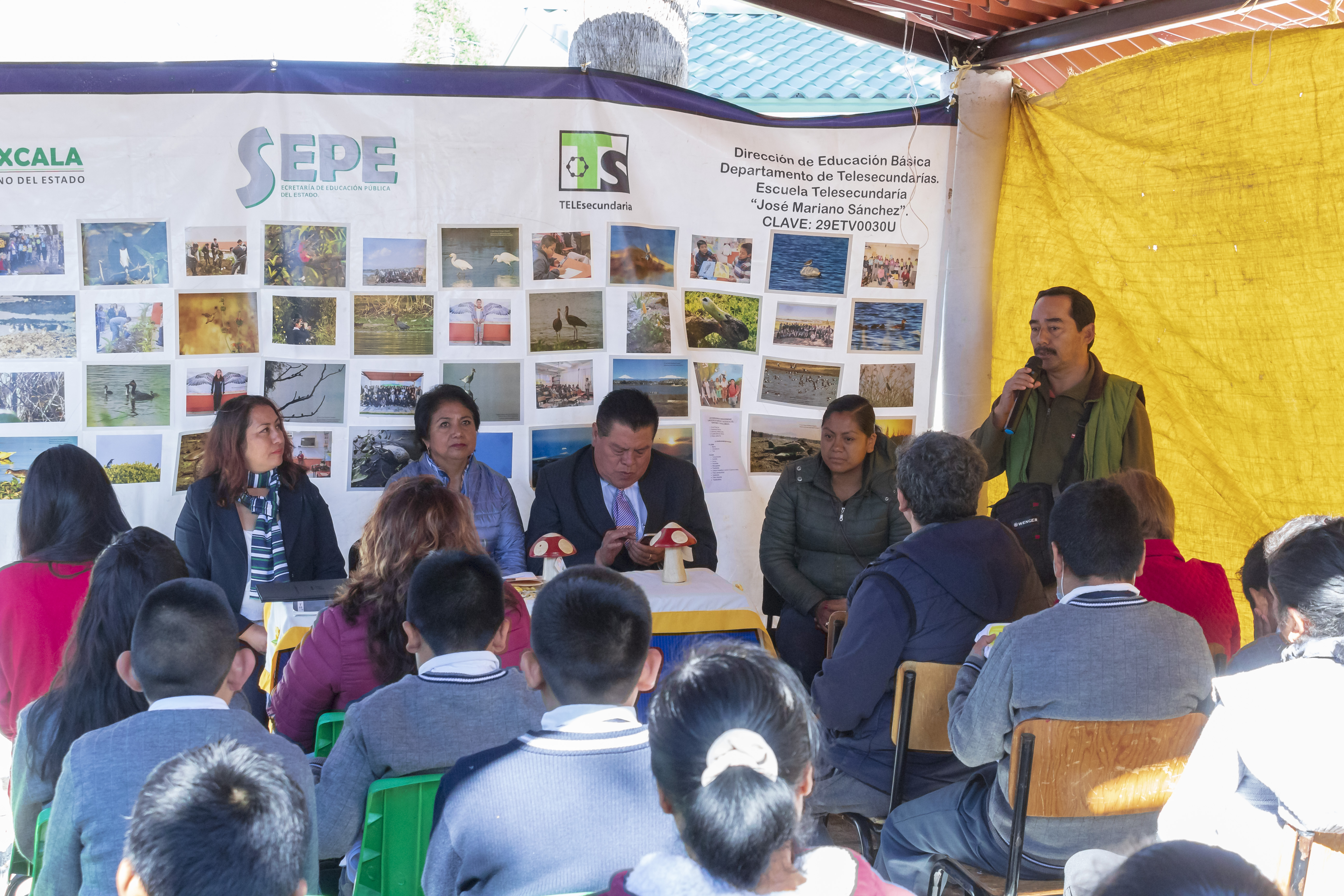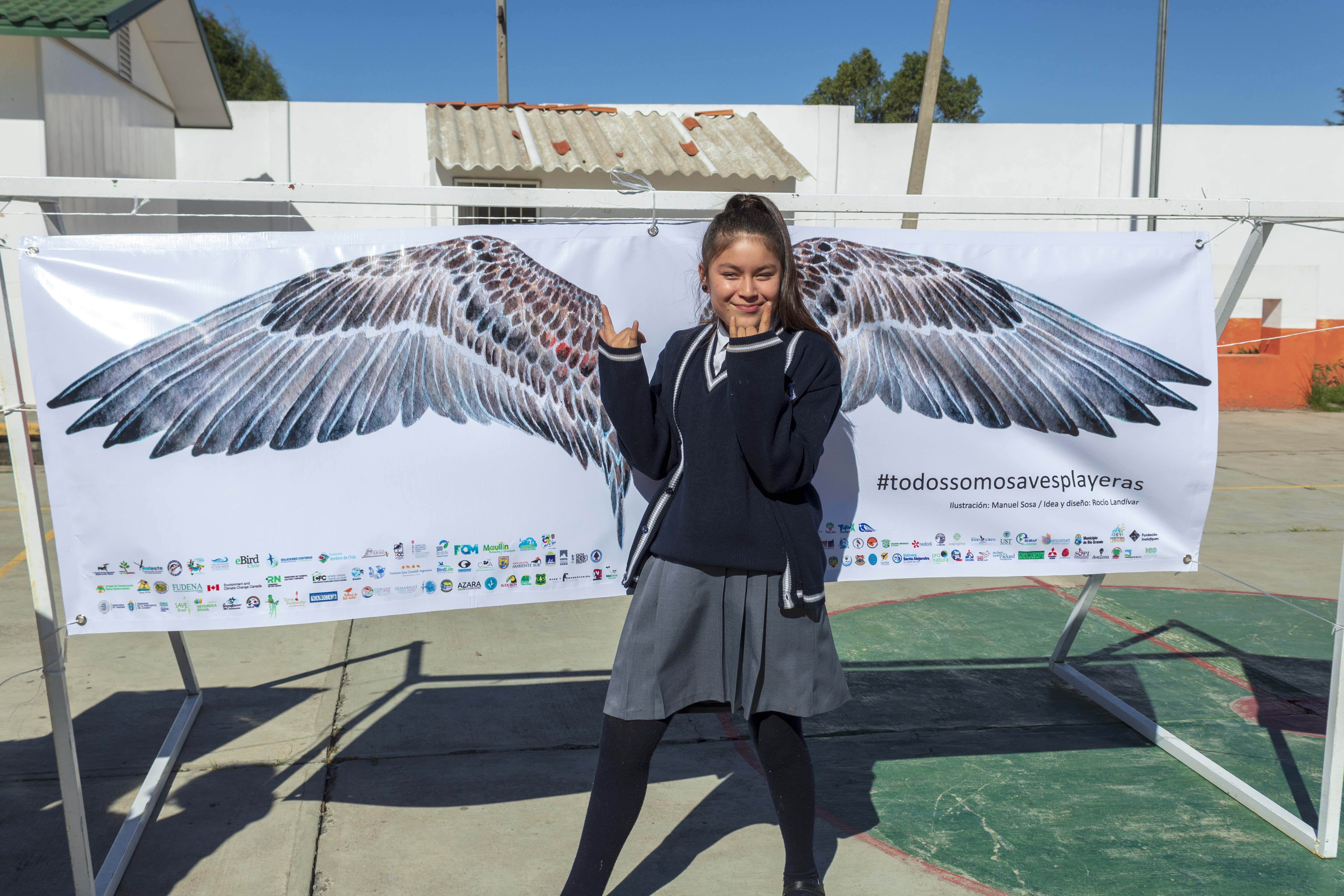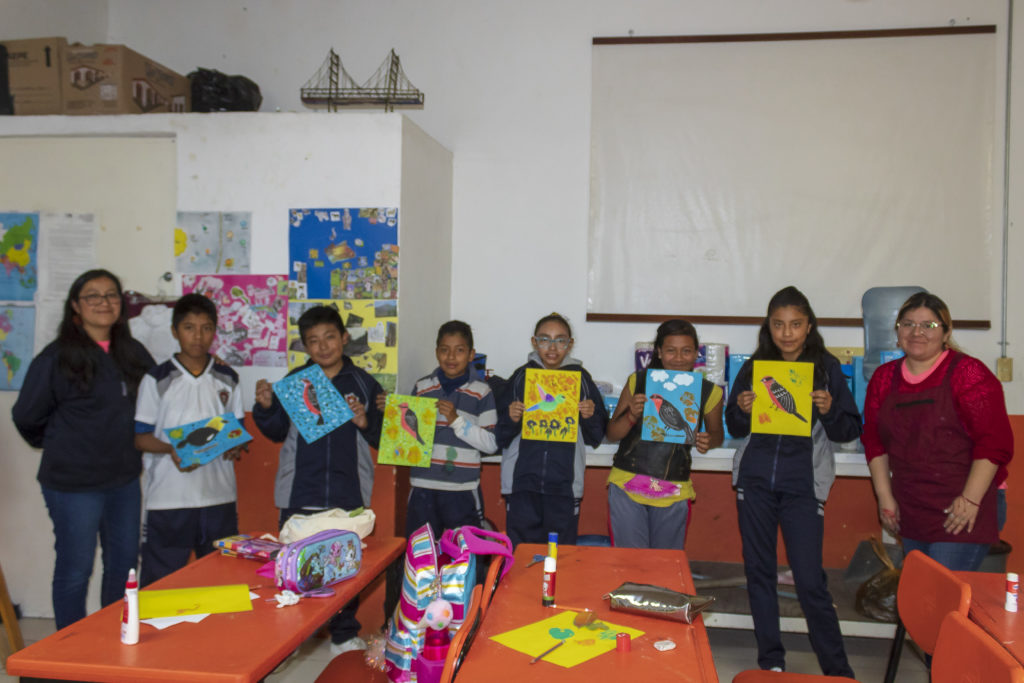 Photo ©
SalvemosLaVidaTlaxcala
Photo ©
SalvemosLaVidaTlaxcala
The organizations Salvemos la Vida Tlaxcala (In English, Save the Life Tlaxcala) and Tujlux Ecoviajes coordinated the first bird conservation festival Between Birds and Binoculars in the Santiago Tlacochcalco community. The Santiago Tlacochcalco community is located in the Tepeyanco municipality, Tlaxcala, Mexico. Santiago Tlacochcalco is located on the shore of the Acuitlapilco Lagoon, one of the most prominent wetlands in the state. Its beautiful landscape and extraordinary biodiversity are amazing! The festival was honored to have the participation of the José Mariano Sánchez Telesecundaria School. The students of the school and their families form a community that holds a lot of the history and traditions of the local culture.
Salvemos la Vida Tlaxcala was awarded a 2019 Latin America and Caribbean mini-grant from the Cornell Lab of Ornithology. This organization proposed creating a festival that would raise awareness among young people and their community about the importance of local birds, migratory birds, and the ecosystems. The festival was a big success!
From children to older adults, everyone participated in the festival! The festival began with a group of older women sharing their relationship with the Acuitlapilco Lagoon. The women spoke about their experiences as young girls, and how they fed on charales (a small fish known as Neotropical silversides in English), acociles (a small freshwater crayfish), frogs, axolotl (a type of salamander), carp, ducks, watercress, and so much more! However, they sadly said that the animals and the vegetation they fed on no longer existed in the lagoon. They hope that in the future more youth would become involved in conservation activities to prevent the lagoon from drying out again as happened more than a decade ago. This interview was very emotional and powerful. The interviewees were Elvira Flores Ata, Esperanza Sánchez, Herminia Jiménez Juárez, Eulalia Sánchez Jiménez and Rosa Juárez Ata. These extraordinary women are over 80 years old and have lived their entire lives in the community near the lagoon.
The next festival activity was a diagnostic survey to see how much the young participants knew about the birds in their community. Most of the students knew the local birds by name as well as what they ate. However, a large number of the participants were unaware of the role birds have on the local environment. Next, the students had an introductory talk where they discussed why birds were important. This was followed by a workshop discussing what birds are as well as how they evolved. The workshop spoke about the birds of Tlaxcala as well as birds across the world. It mentioned the role of birds as pollinators, seed dispersers, natural pesticides, natural cleaning agents and environmental indicators. Data was shown on how a large number of species have become extinct due to human activities. Participants then brainstormed solutions to reduce harm to the species. In addition, the importance of observing and counting the birds of the community to help with their conservation was emphasized.
With the support of their science teacher Juan Carlos López Domínguez, a leader of the Naturalista network promoted by CONABIO (Comisión Nacional para el Conocimiento y Uso de la Biodiversidad) (English: National Commission for the Knowledge and Use of Biodiversity), the students received information about citizen science and the importance of collaborating with others to expand the knowledge of the biodiversity existing in their community. There was also a workshop on how to use Naturalista.mx, an online resourse where participants can learn all about the plants and animals of Mexico. There were also two field trips where students photographed everything that was alive with a cell phone. The students loved seeing the details of each bird up close! The science teacher Juan Manuel González García gave the discussion-based workshop: Gardens for Hummingbirds and other pollinators. The young participants learned more about the relationships between plants and hummingbirds. As part of the workshop plants that usually attract hummingbirds, such as Baby Sage (Salvia microphylla), Mexican Bush Sage (Salvia leucantha), Golden Shrimp (Pachiystachys lutea), Mexican giant hyssop (Agastache mexicana), succulents, fuchsias and lavenders were planted in the school. The students were excited because now they could provide data about the birds that come to their school’s garden to feed on the plants! First grade students were also given a homemade hummingbird feeder and were taught how to make the homemade sugar mixture that goes into the hummingbird feeders. The students were very excited to begin their citizen science journey.
The visual arts teacher and environmental engineer Alva Daniela Escobar Juárez and workshop leader María Guadalupe Cuaxilo Muñoz led a workshop called PintAves. The workshop introduced young people to the birds that inhabit the Acuitlapilco lagoon and taught them to pay attention to the details that differentiate each species. The workshop was enriching! Students were able to identify their favorite birds in their habitat: the Acuitlapilco Lagoon.
The last activity was a bird count using binoculars, monoculars and bird field guides to contribute their observations to the aVerAves (eBird in Mexico) application. This activity was supported by the teacher Juan Rafael Rodríguez Rasgado who has specialized in using photographs to record the biodiversity of the lagoon. Some of the most attention getting birds were the Scarlet flycatcher (Pyrocephalus rubinus) and the Cassin’s kingbird (Tyrannus vociferans).
The closing ceremony of the festival was held at the Telesecundaria facilities. The closing ceremony was attended by the Zone Supervisor of the Telesecundaria Directorate, the staff of the Department of Educación Ecológica de la SEPE-USET (Secretaría de Educación Pública de Tlaxcala)(Ecological Education of the SEPE-USET (Secretary of Public Education of Tlaxcala) as well as teachers’ students, and their families. Student, Emily Sánchez Jiménez gave a message about the importance of birds and she said that this festival helped her become familiar with birds she used to see only from afar.
At the end five shirts that said “Guardian of the birds” were given to the most outstanding youth attendees. The winners were: Esmeralda Cariño Padilla, Kevin Gerardo Espinosa Fernández, Tomás Miguel Cuatianquiz Juárez, Heriberto Juárez Juárez, and Emily Sánchez Juárez.
The Inalafquen Foundation, a member of the Argentine Council of the Hemisférica de Reservas para Aves Playeras Network (Western Hemisphere Shorebird Reserve Network) shared a fabric hanging of a giant pair of wings with the hashtag #TodosSomosAvesPlayeras (#Weareallshorebirds). The young people had their photographs taken in front of this wall hanging. Attendees also admired the drawings made by the students. The images were full of color and showed the natural beauty of the birds of the region.
This festival was only possible with the enthusiastic help of the teachers of the institution From the first Erica Nanci Mesa Soria, director of the institution, insisted on hosting the activities for students. In addition, Brenda Soledad Torbellin González, a first-grade teacher, Laura Juárez Coyotzi, a second-grade teacher, and Maricela Ramírez Badillo, a third grade teacher, were all involved in the activities developed with and for the students.
Support from a Cornell Lab of Ornithology’s mini-grant for Latin American and Caribbean organizations, and from Dr. Marta del Campo, the bilingual outreach coordinator of the Cornell Lab of Ornithology also made the project possible. Dr. Marta del Campo was a very important resource for the bird conservation activities. Salvemos la Vida Tlaxcala and Tujlux Ecoviajes express their greatest gratitude to Dr. Marta del Campo! Ecopil Arte Crea Conciencia A.C. organization provided the Mexican institutional support that made the festival a success! Without their support, the dream of the festival would not have become a reality. A huge thanks as well to Erick Daniel Trujillo Castillo and Jessica Vázquez Reyna, the environmental educators responsible for the project who put their dedication and love into each of the activities.

